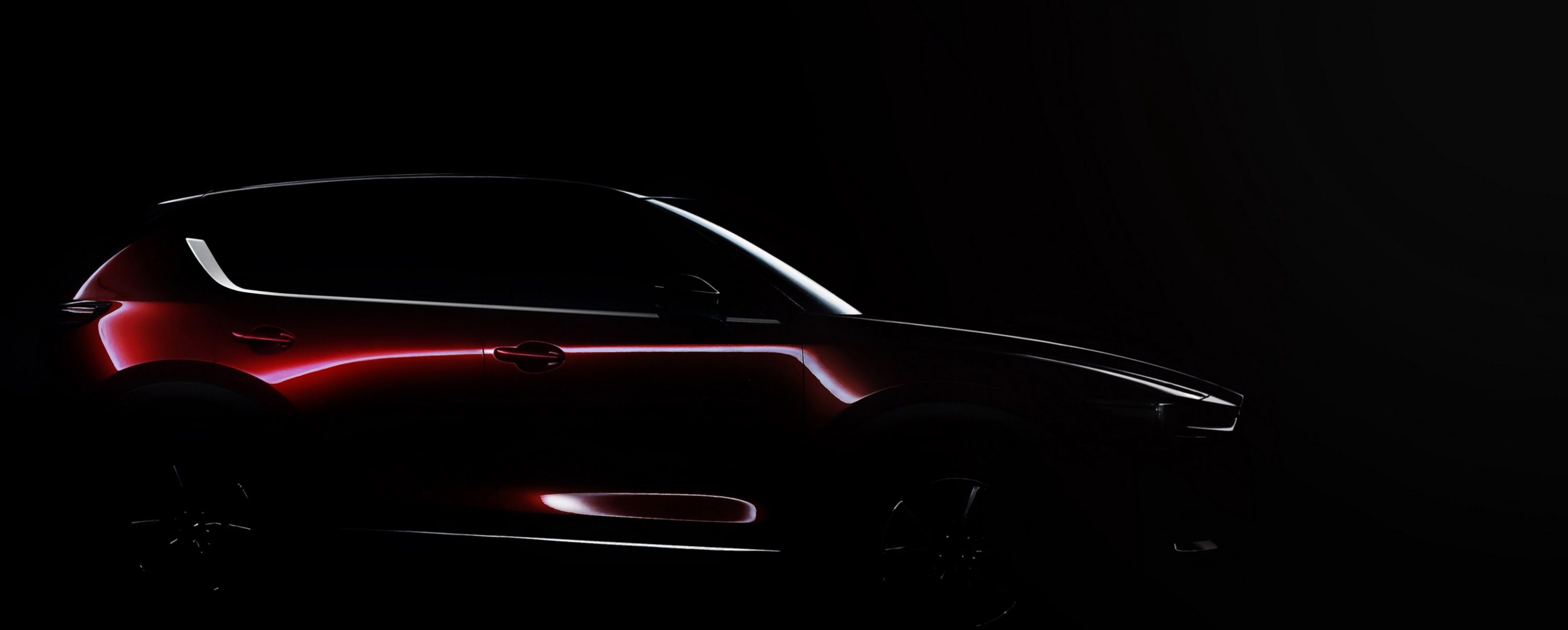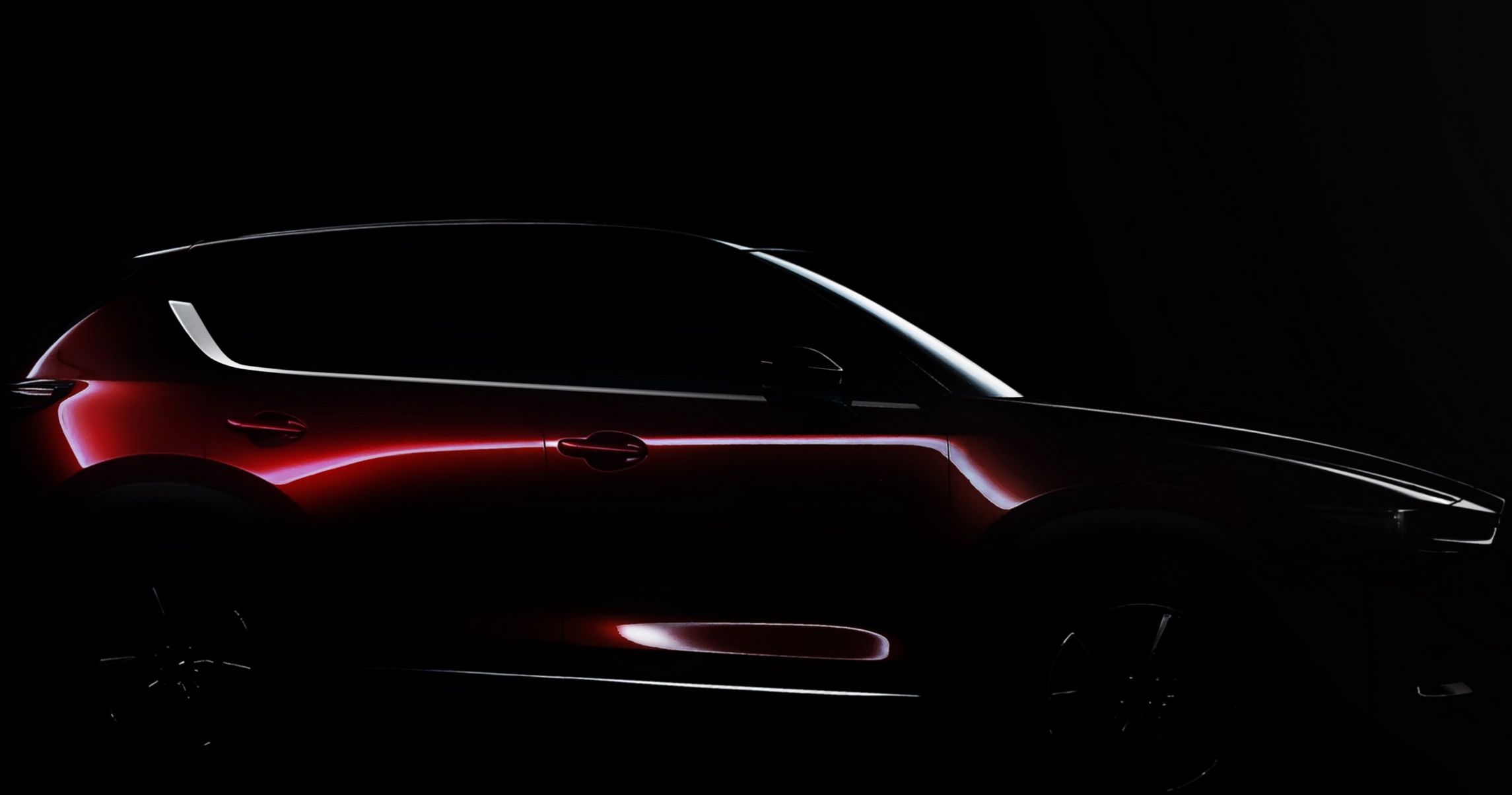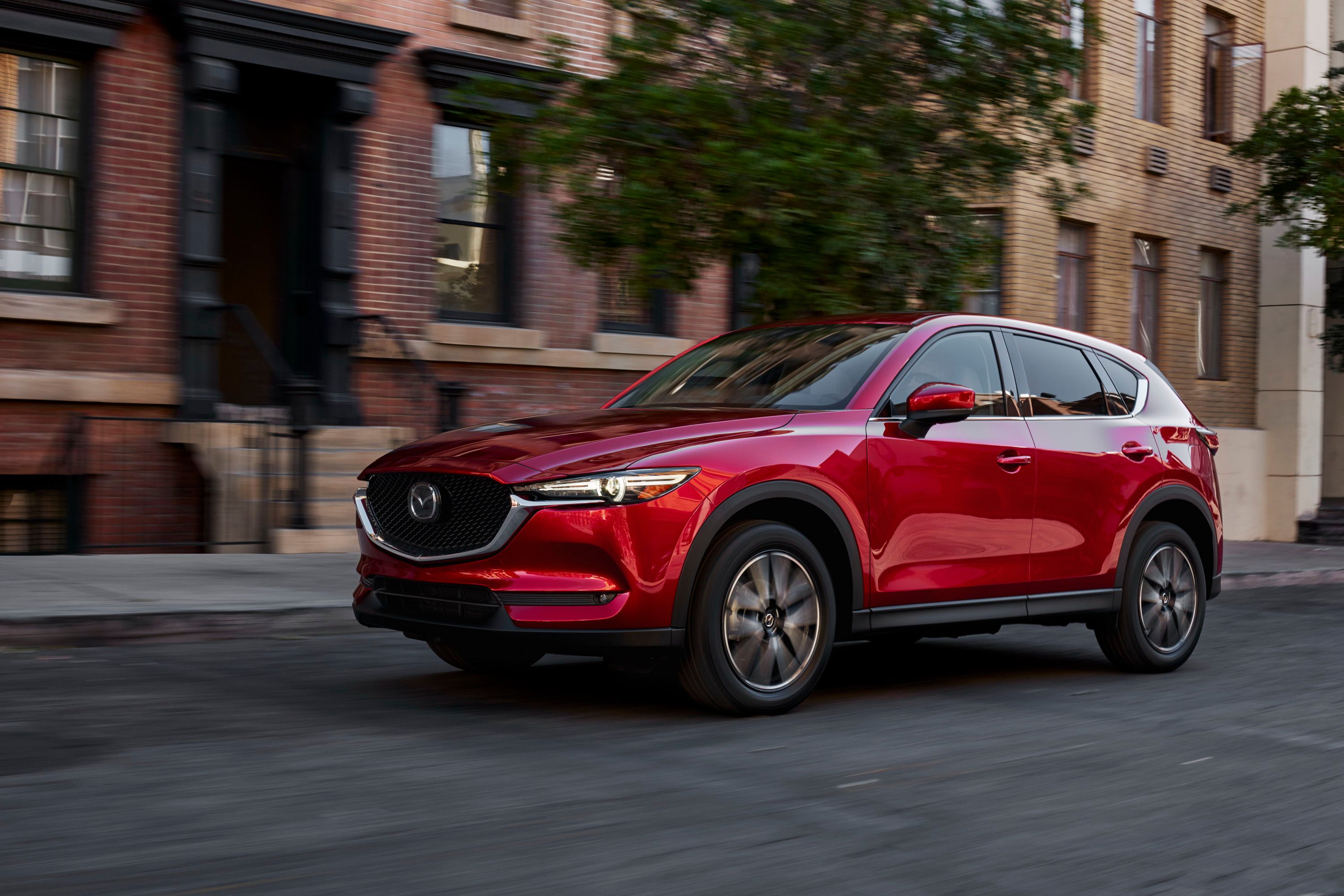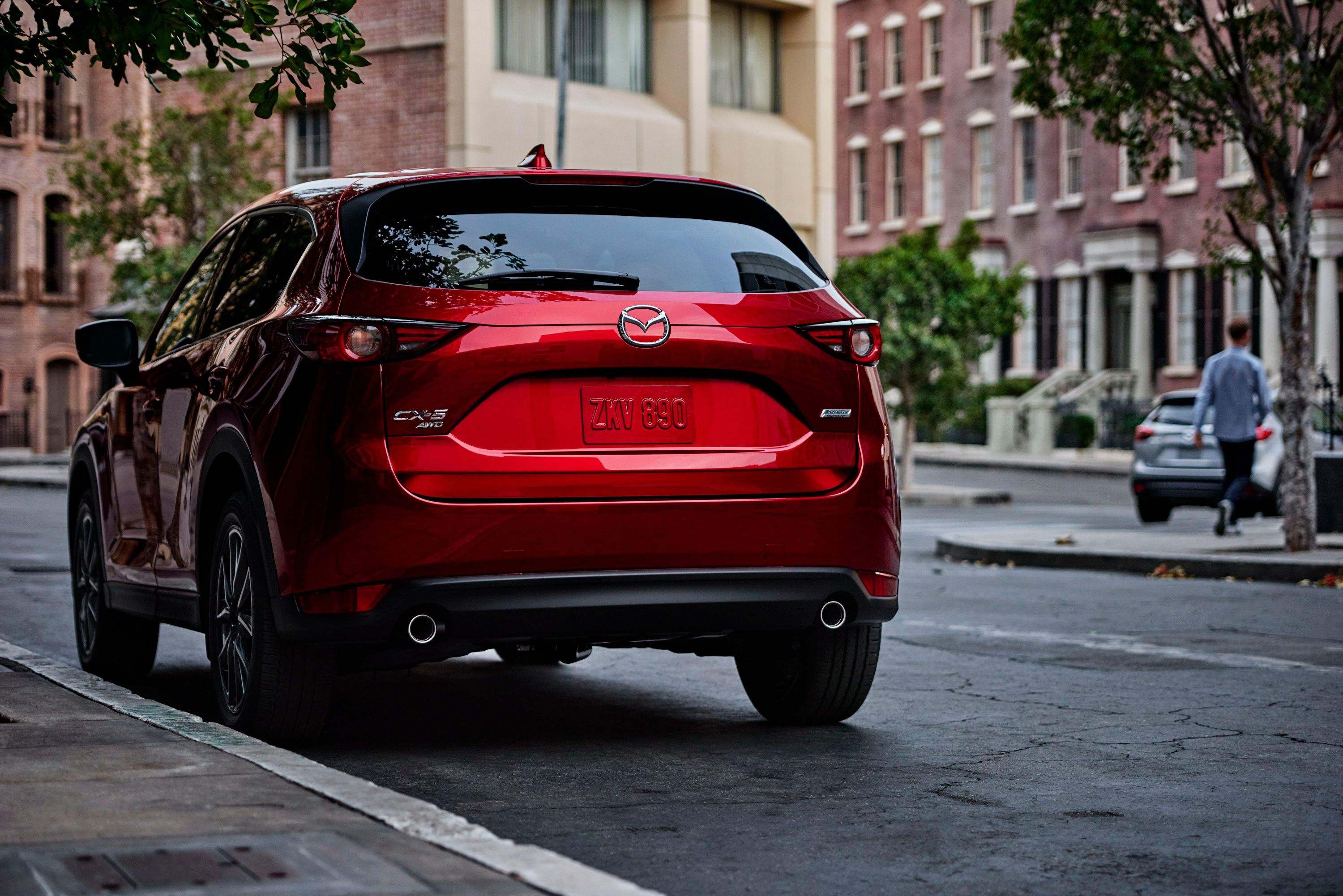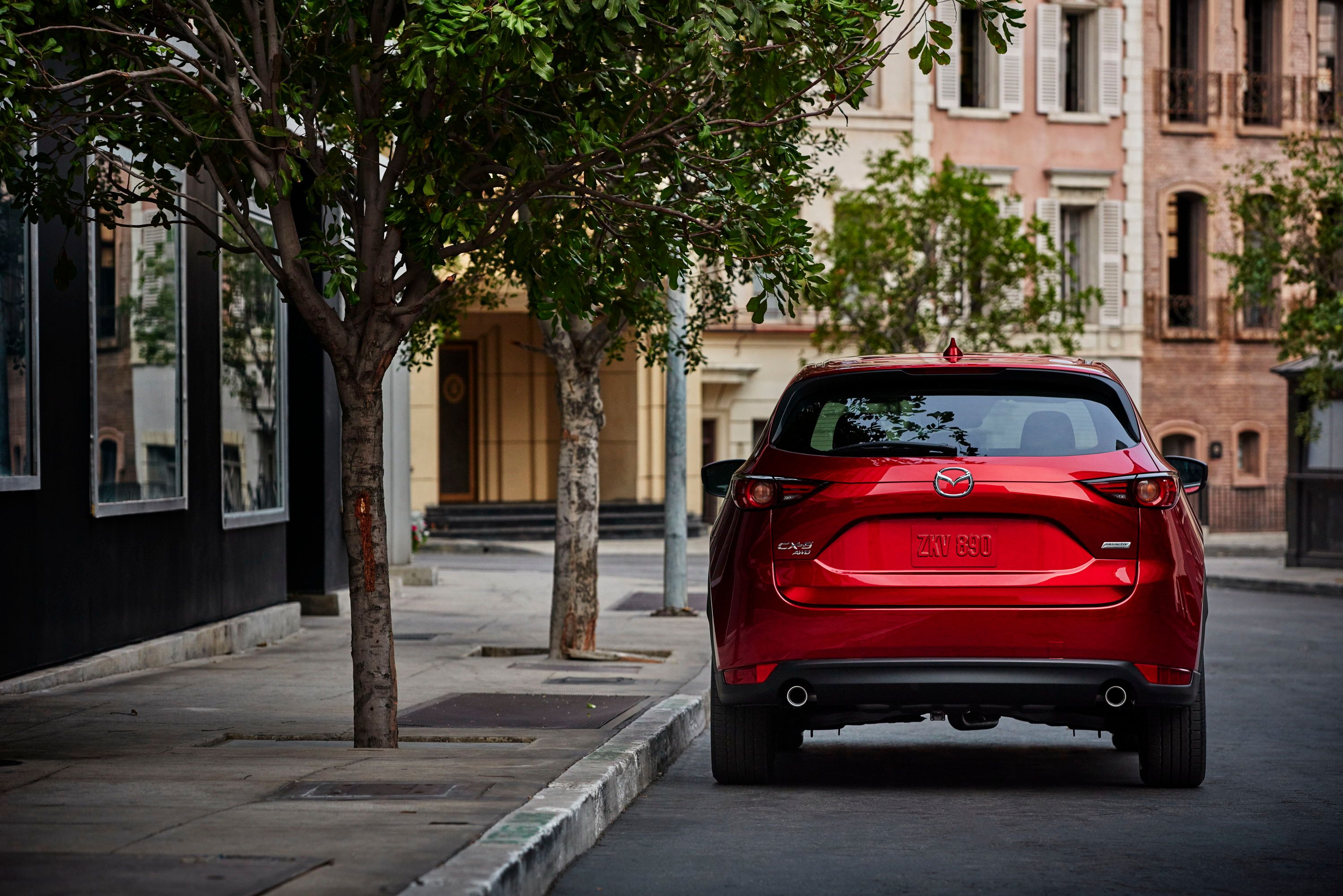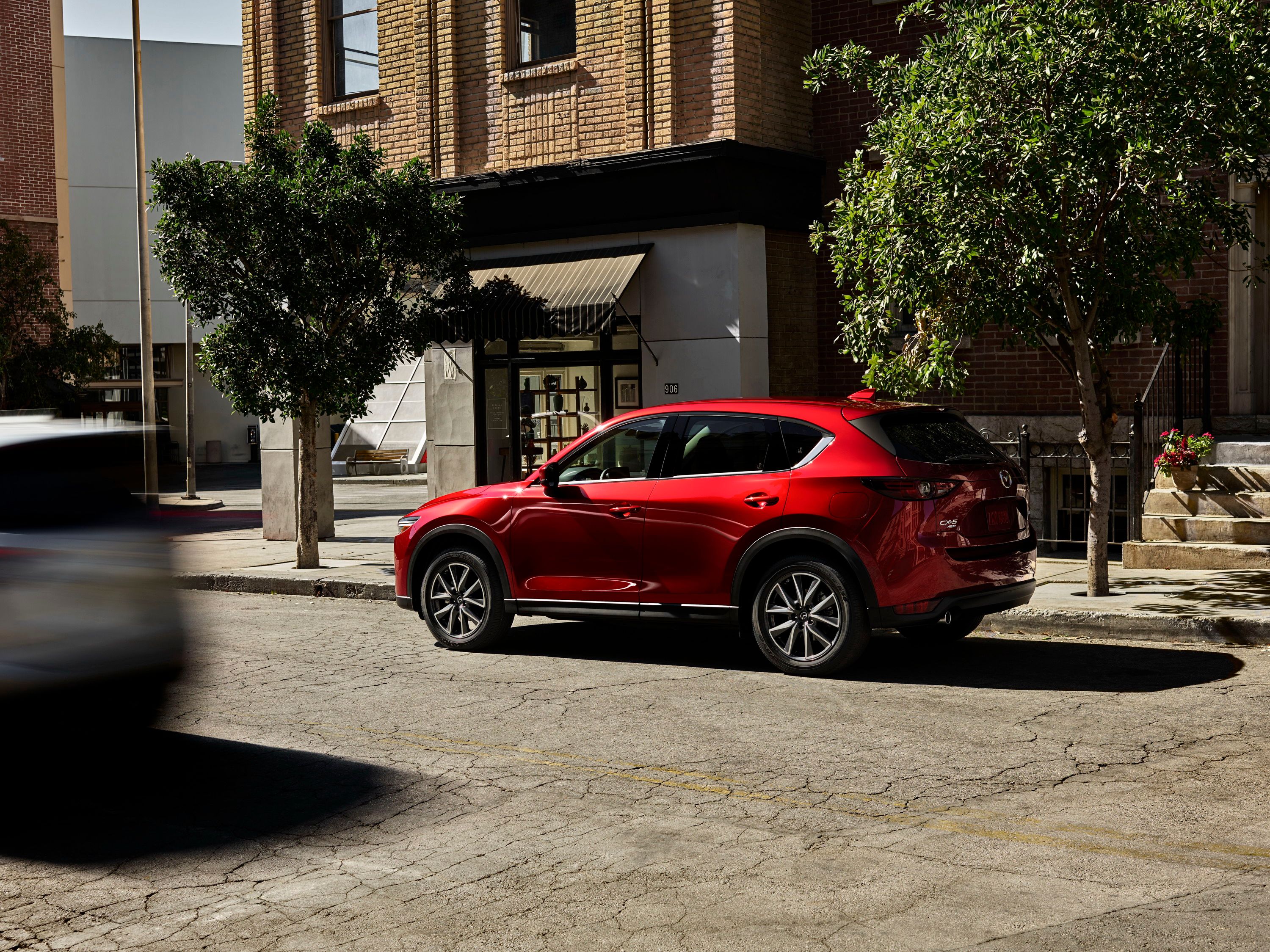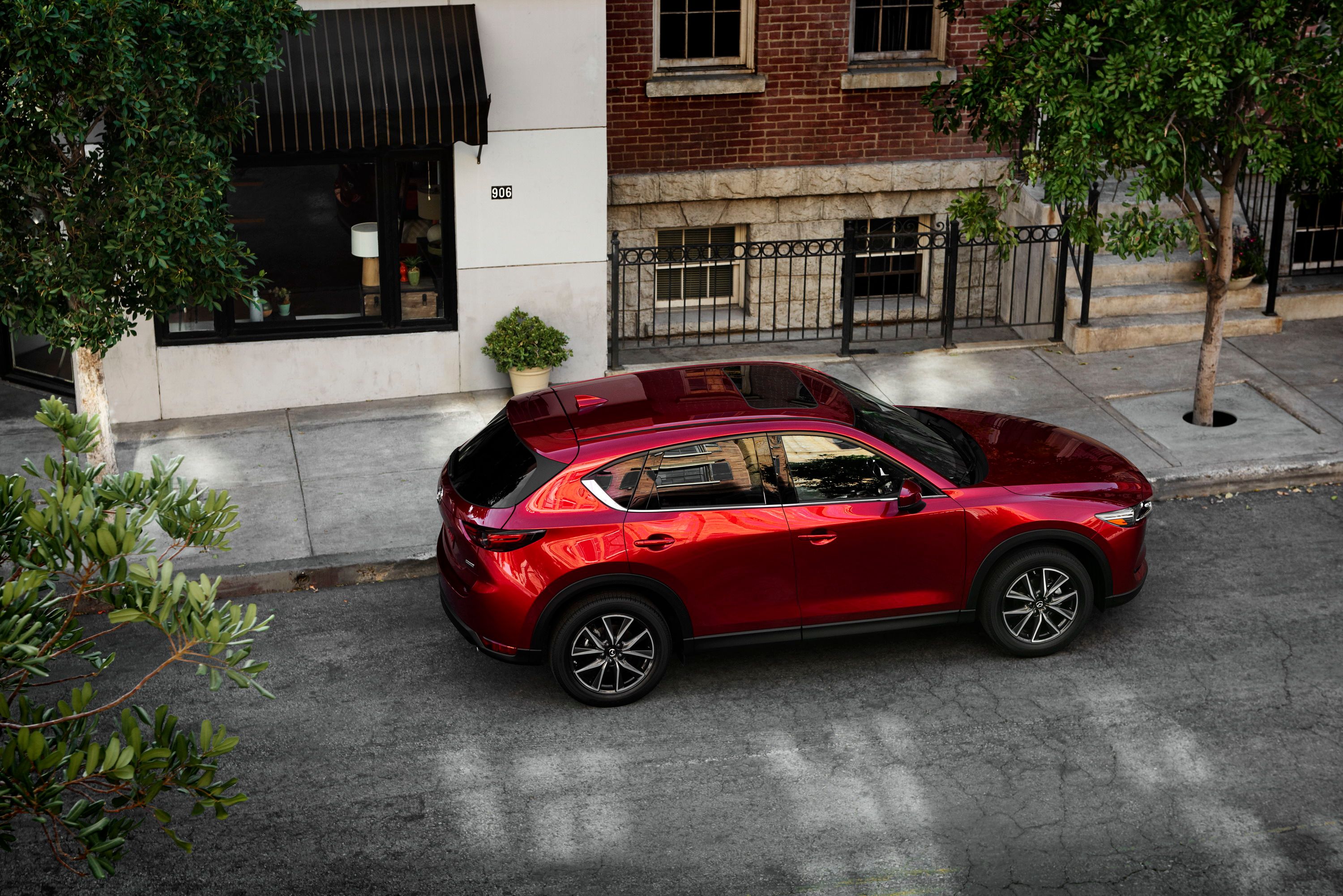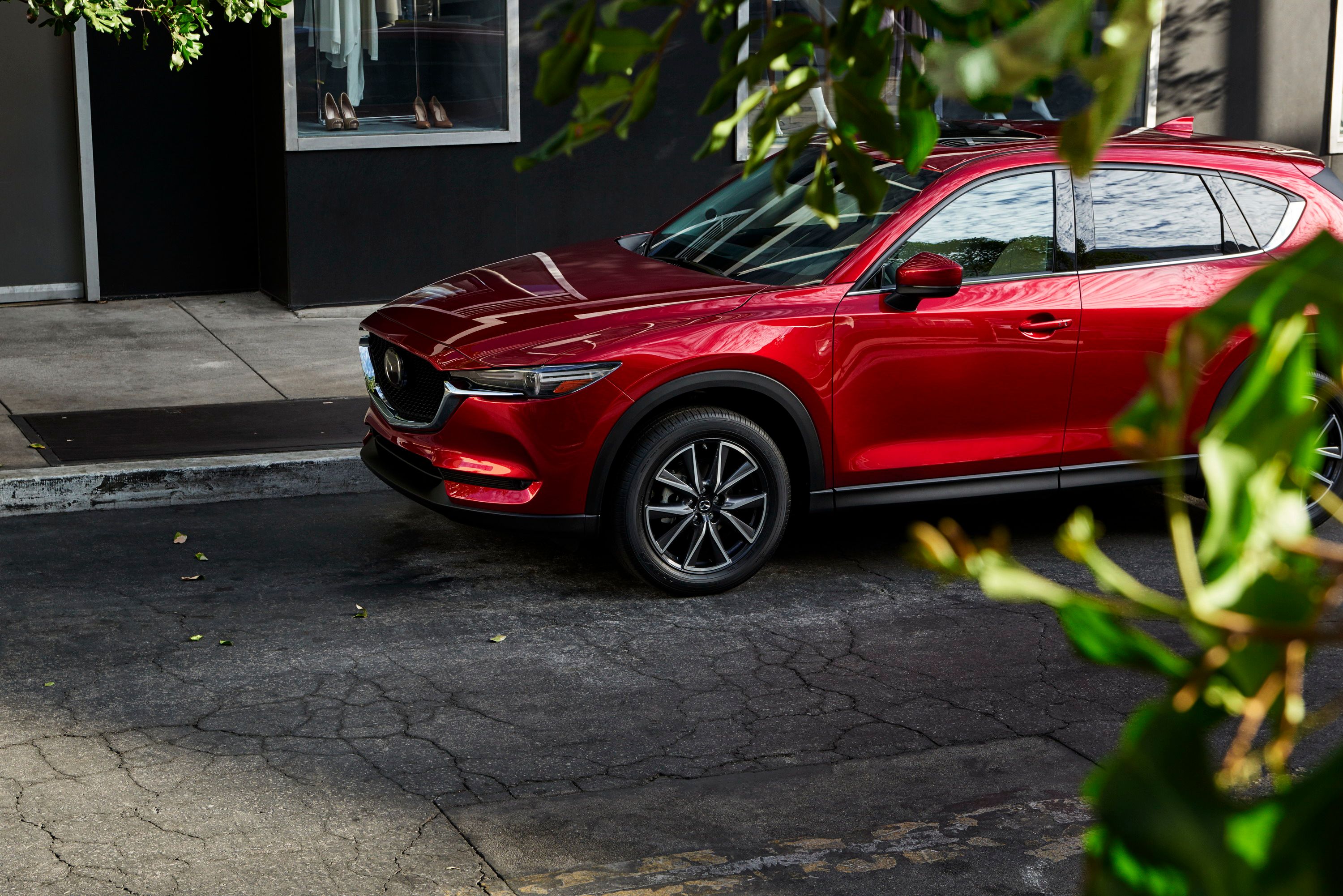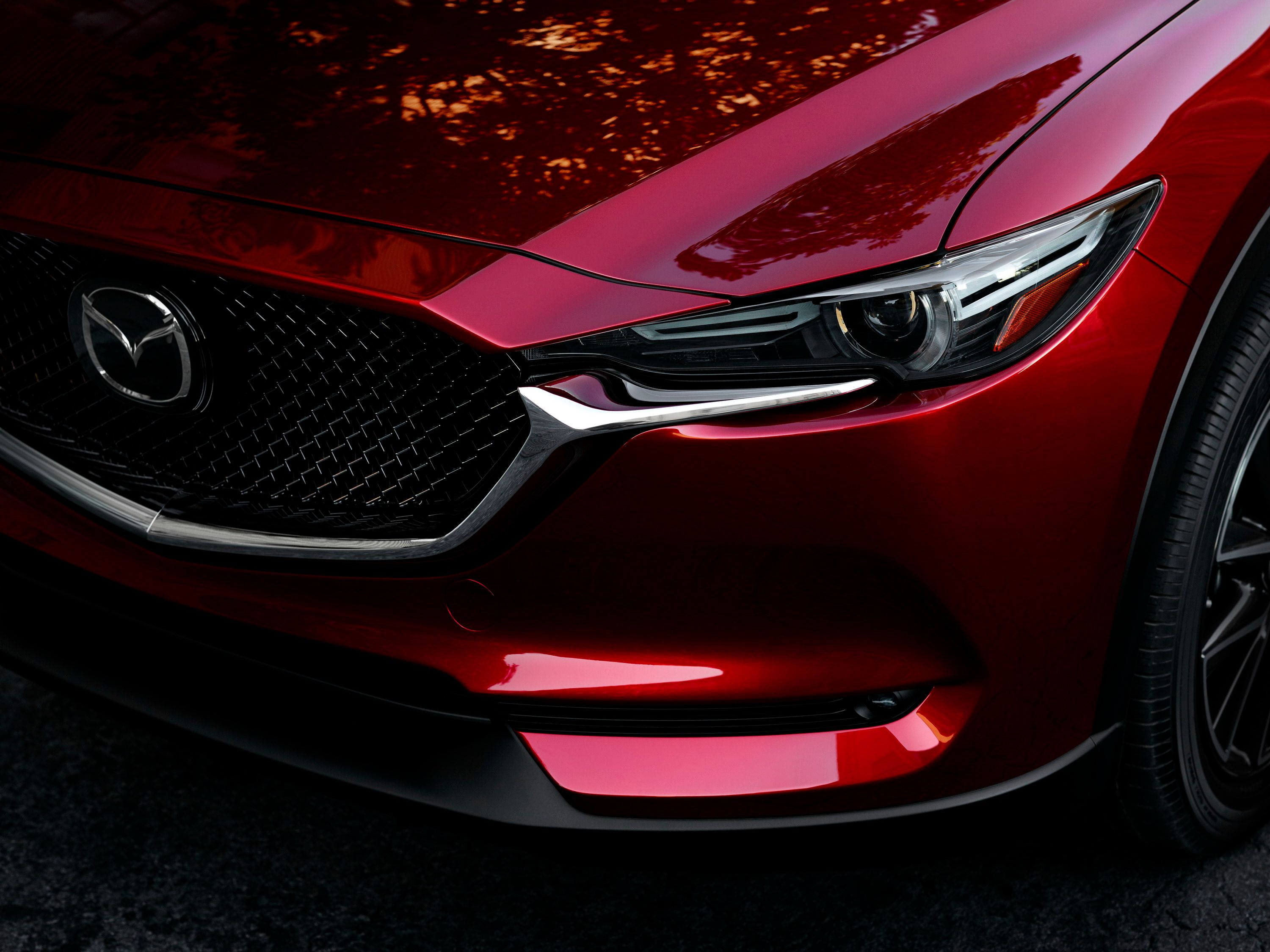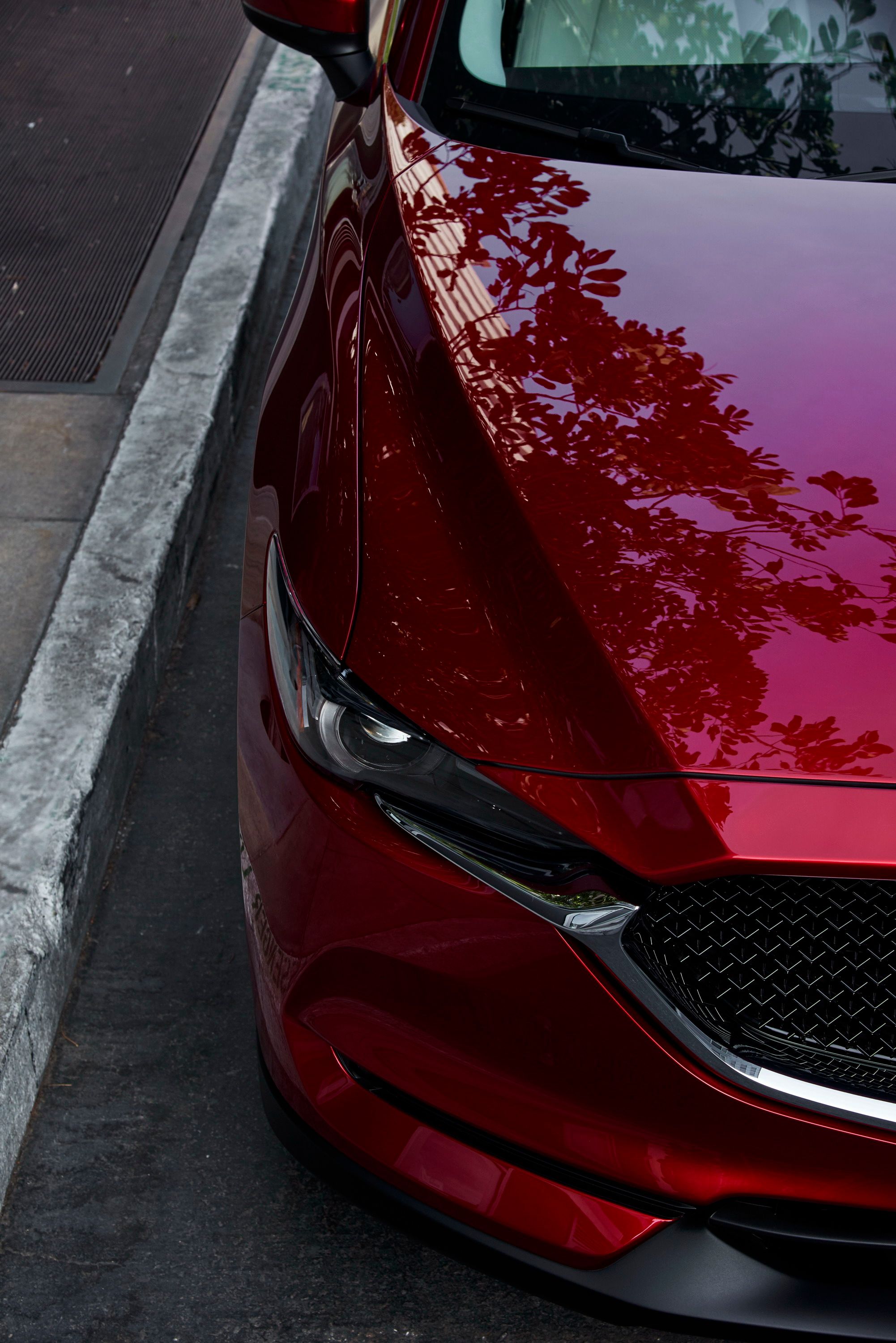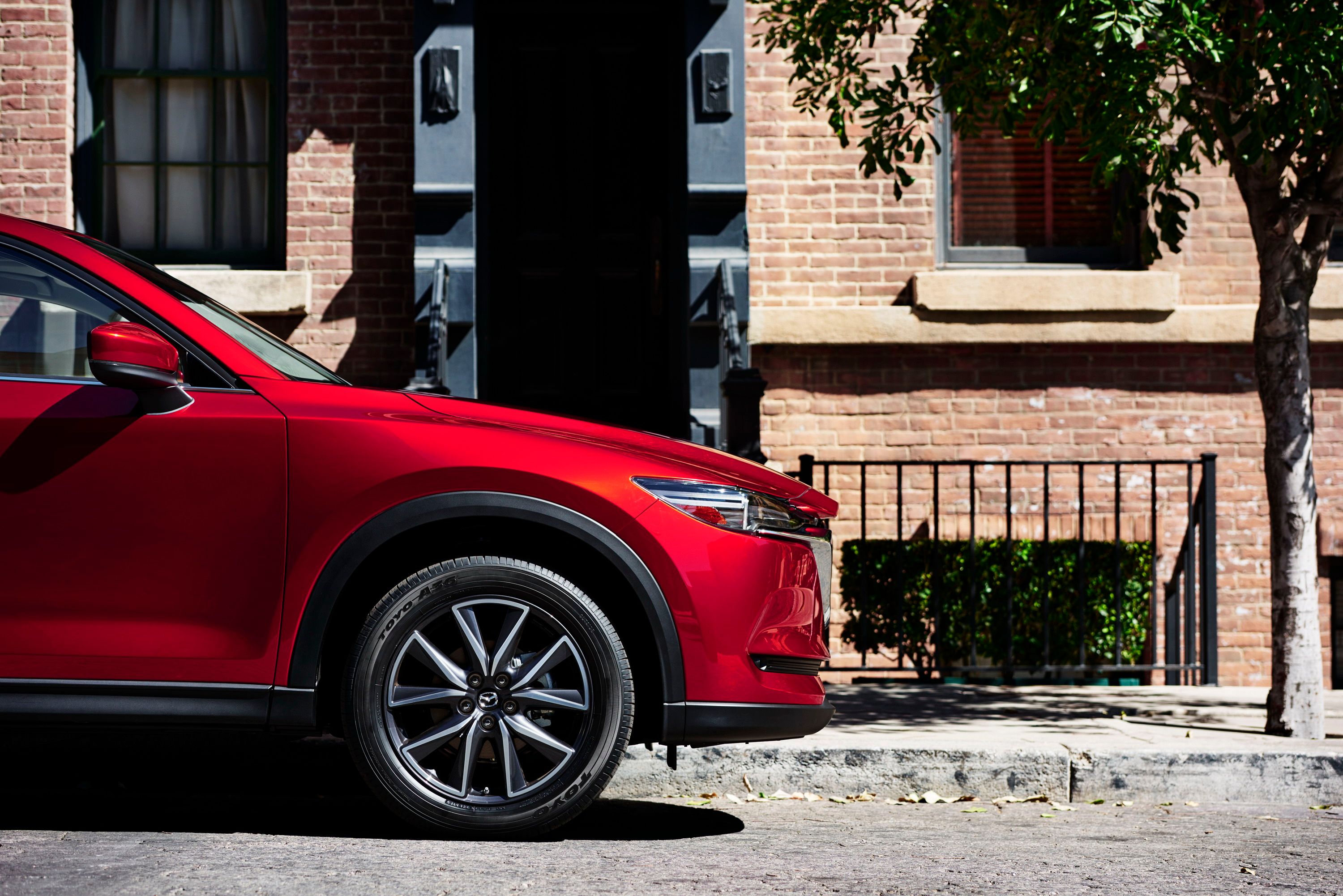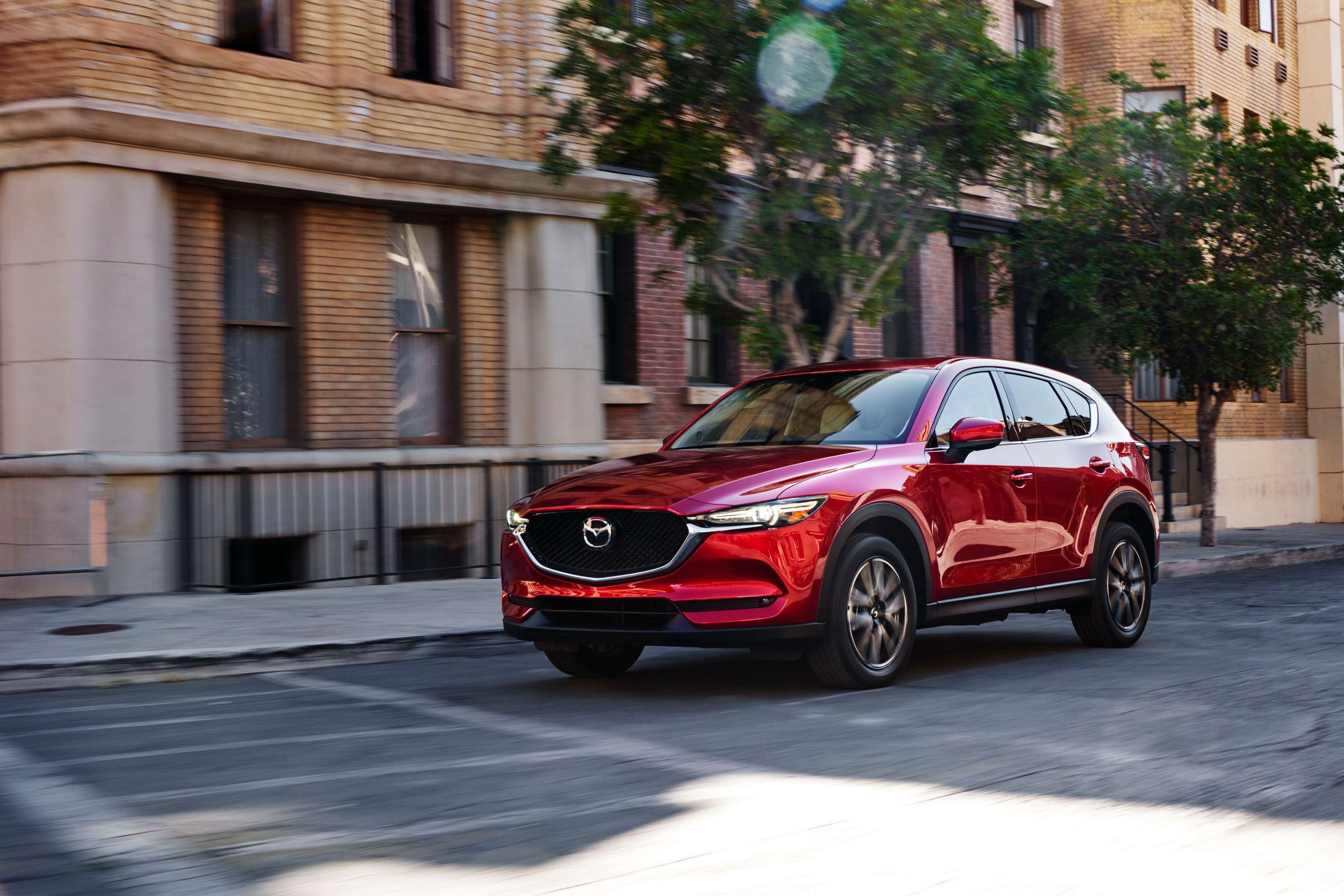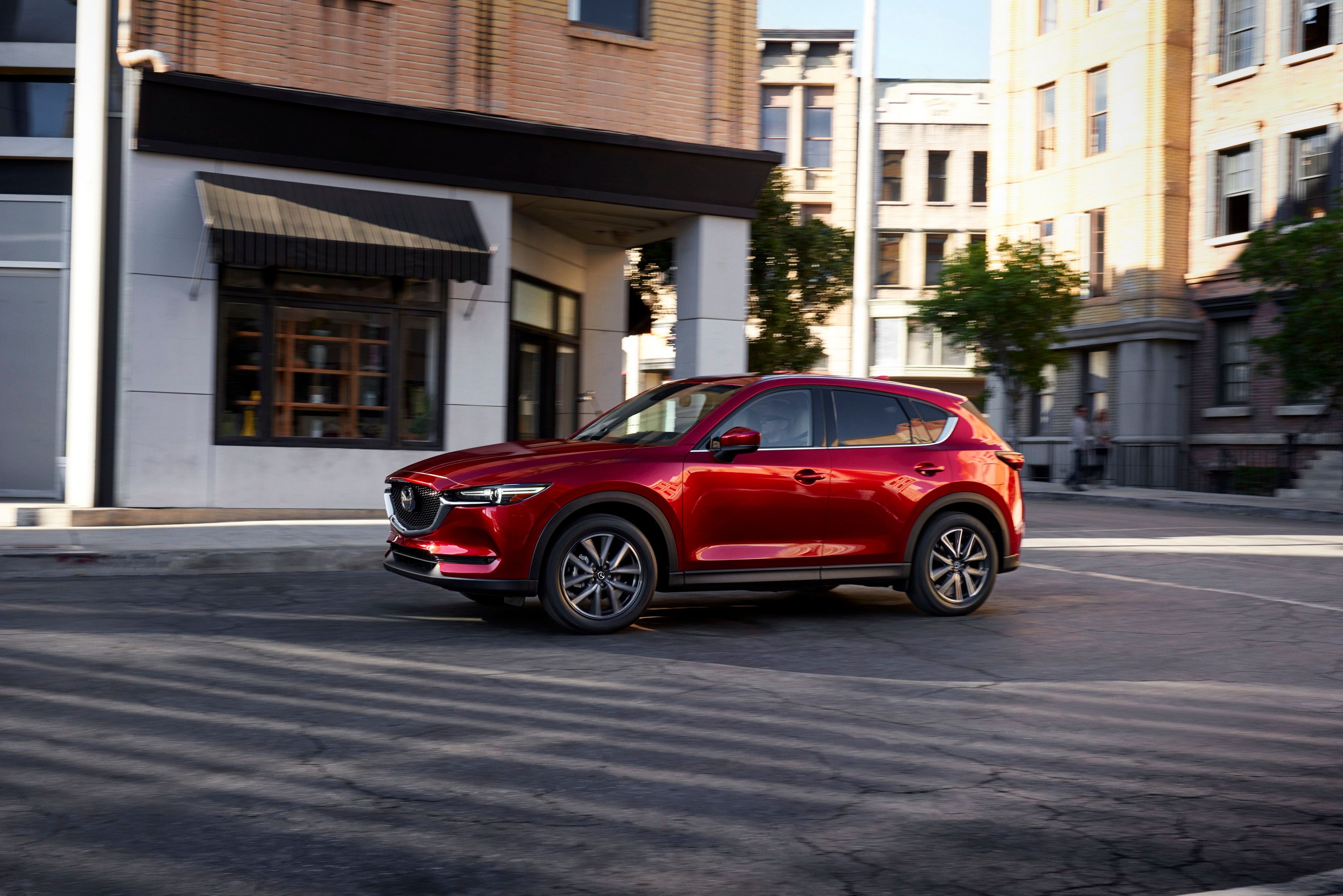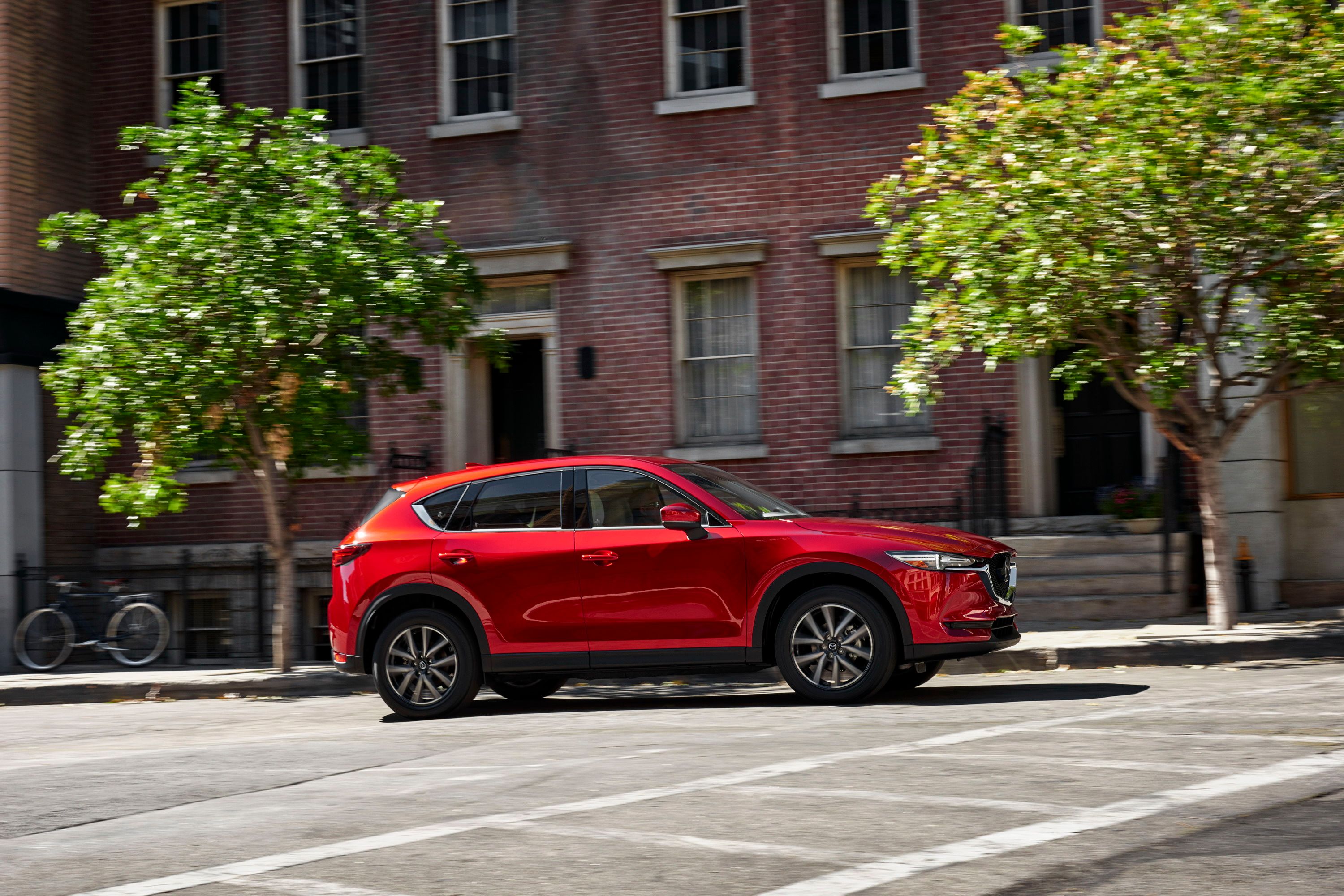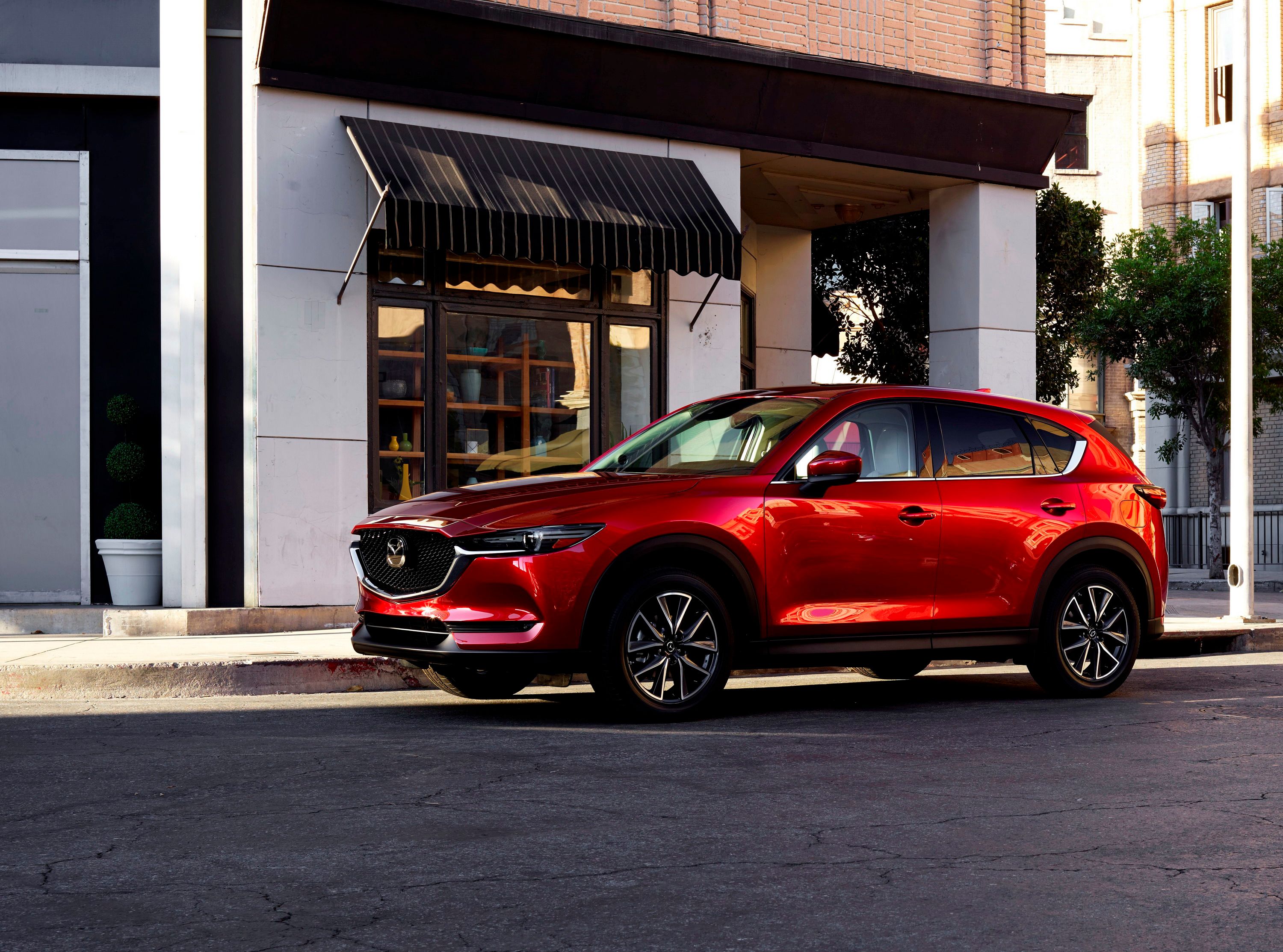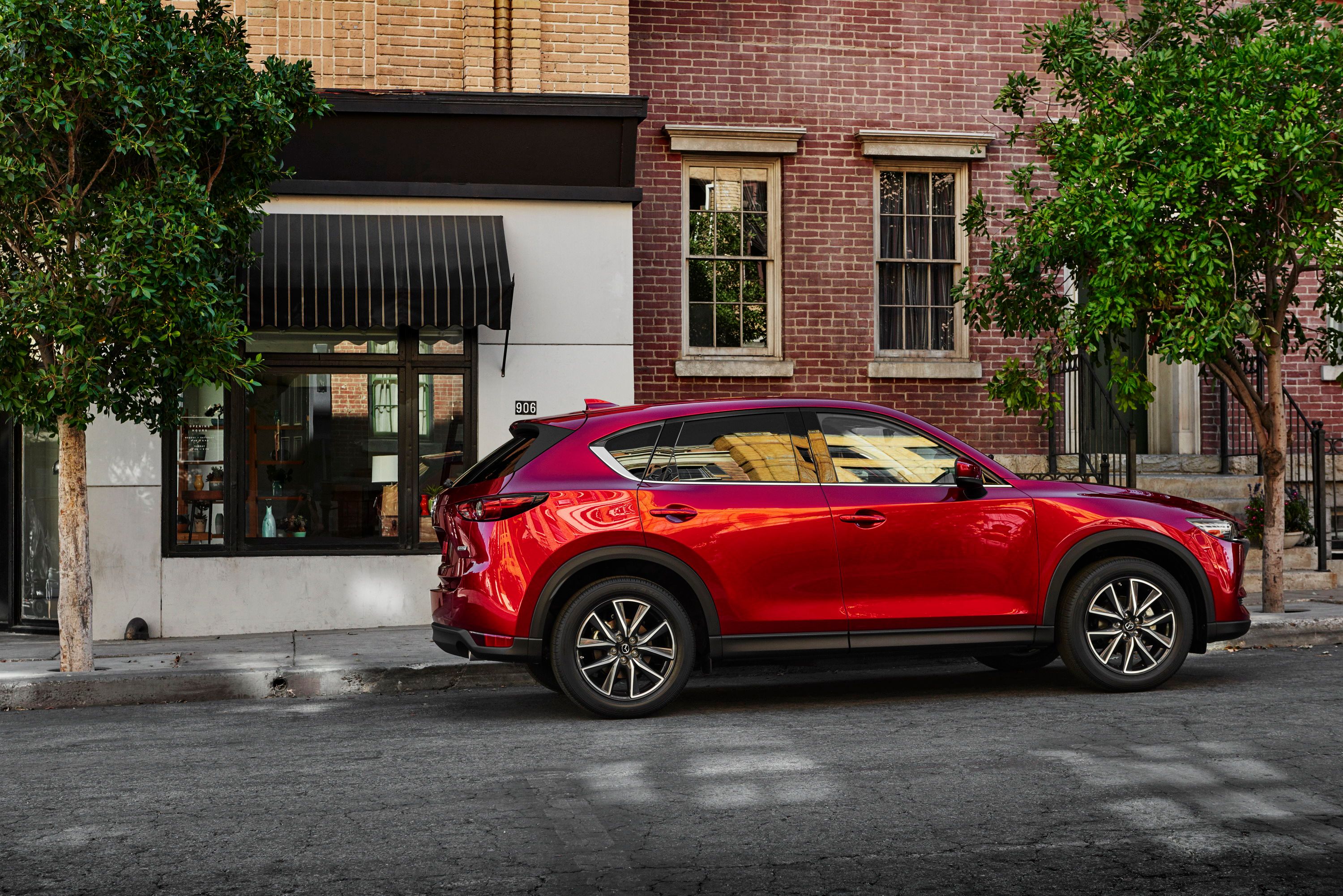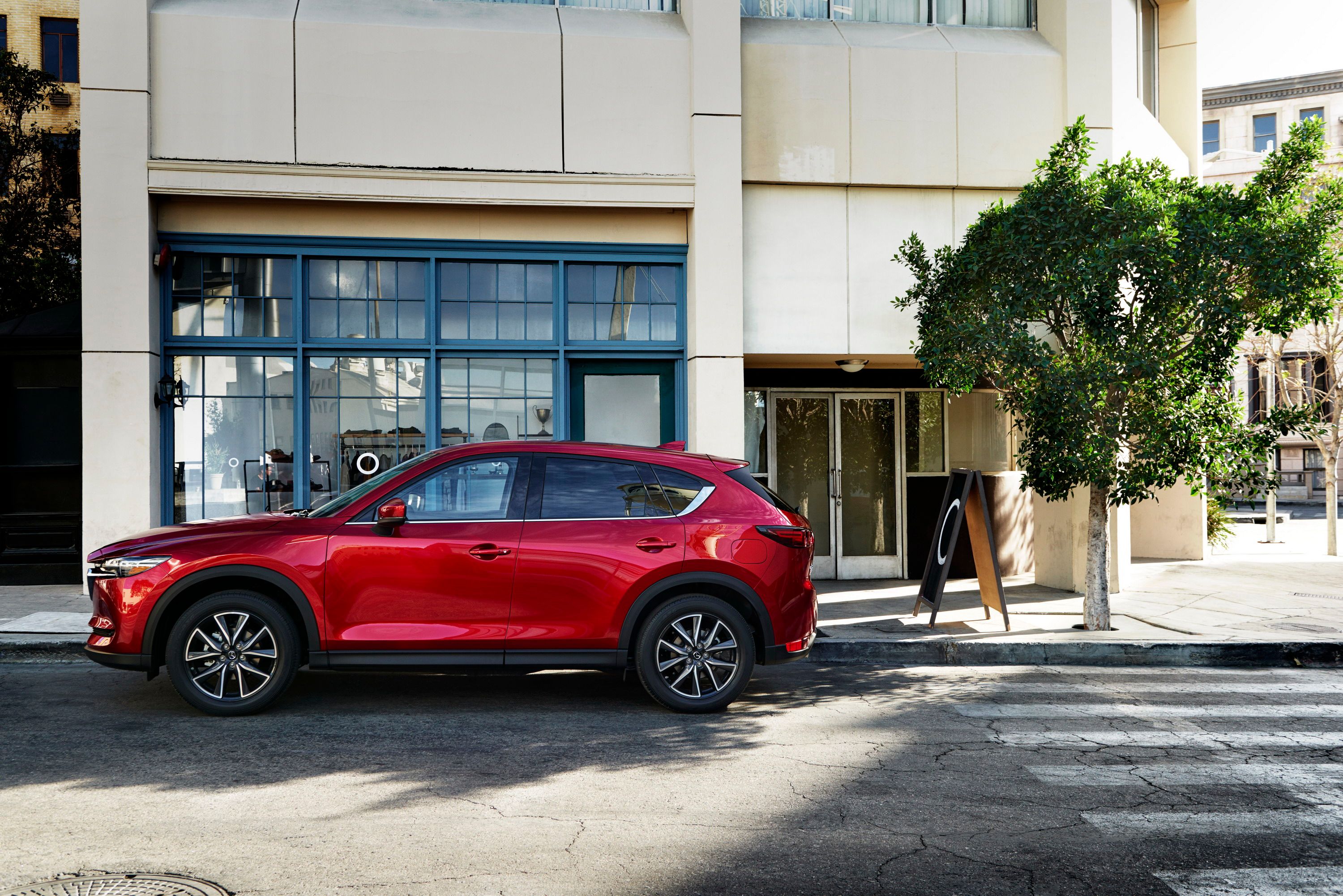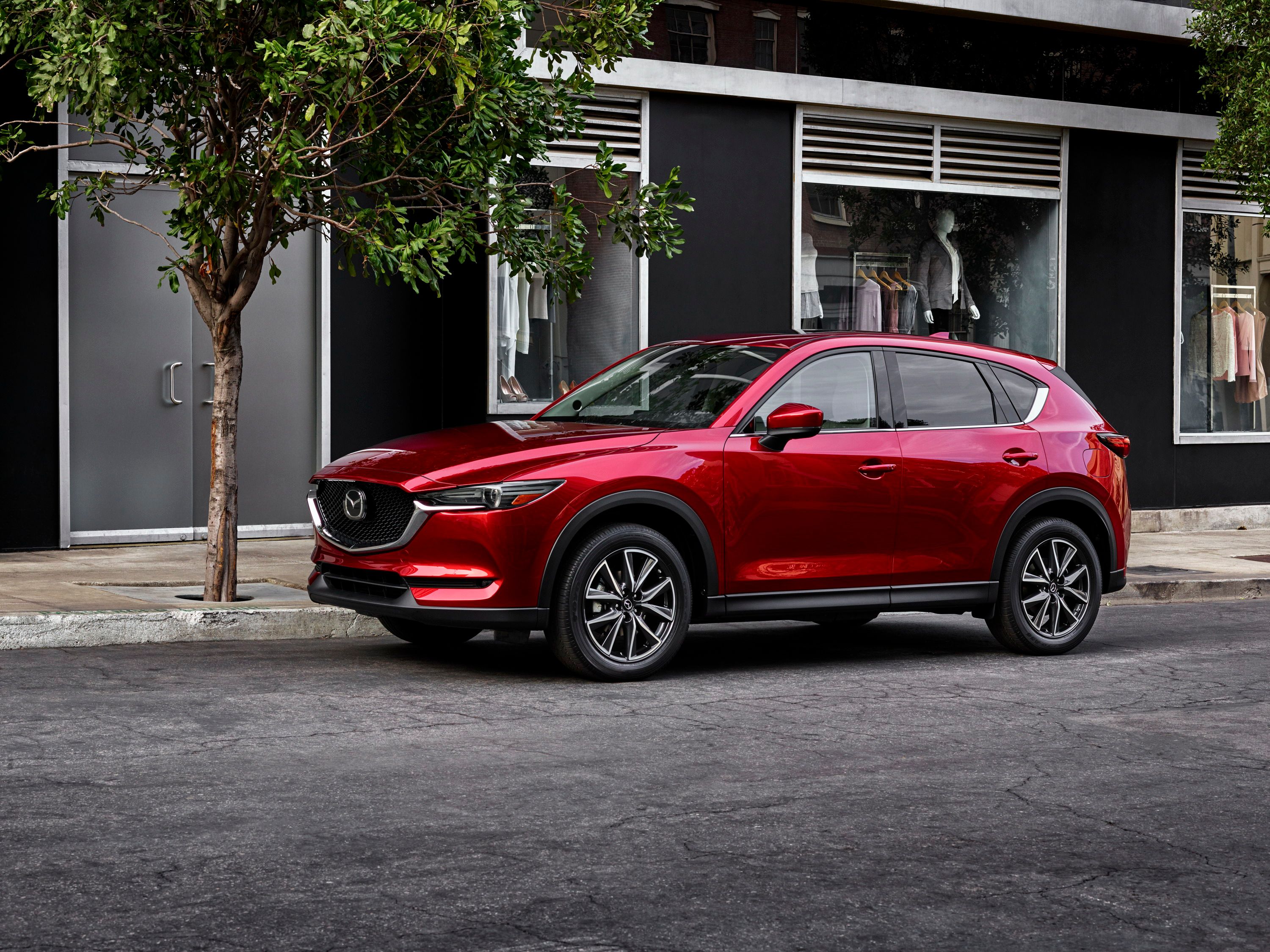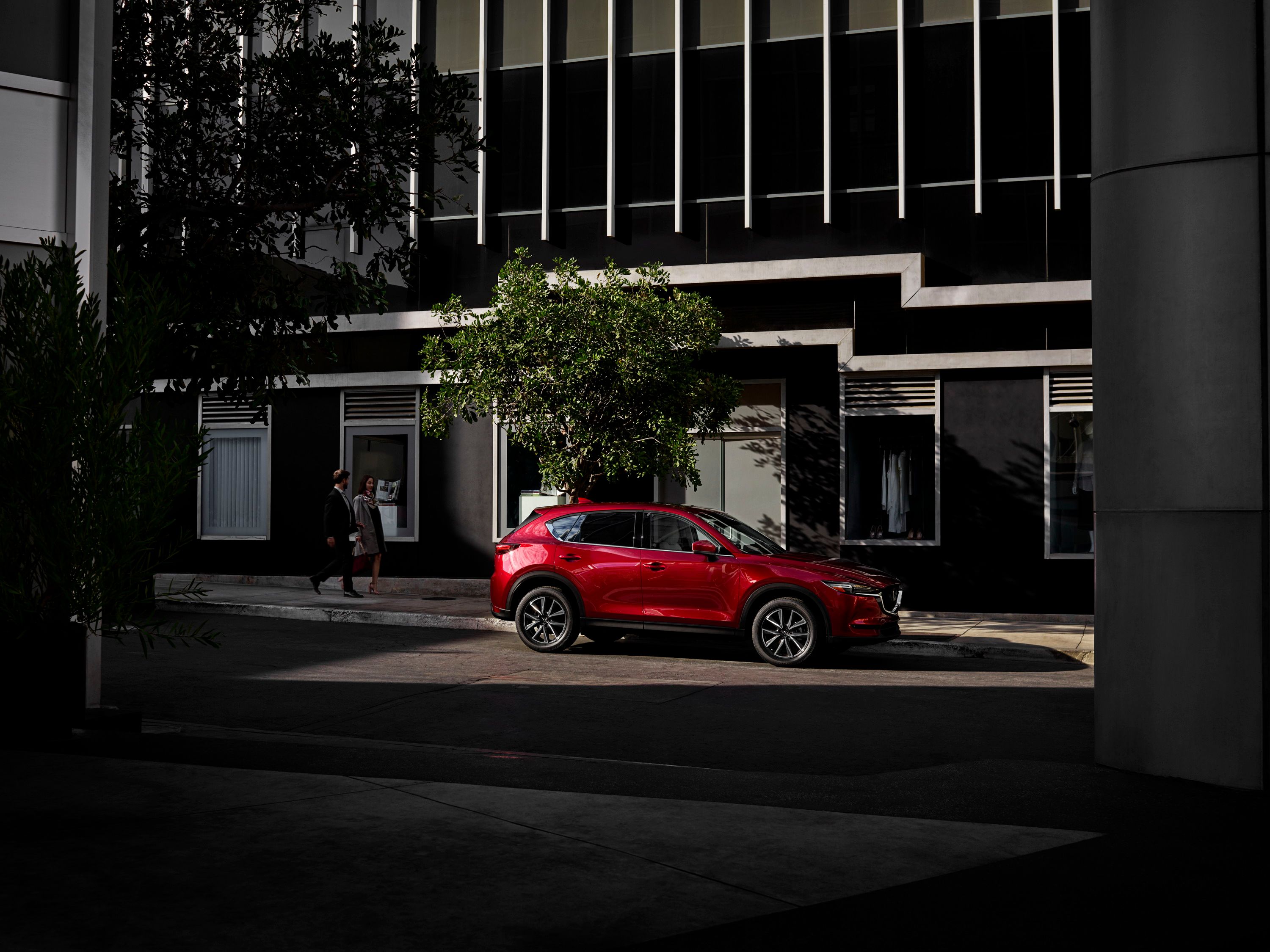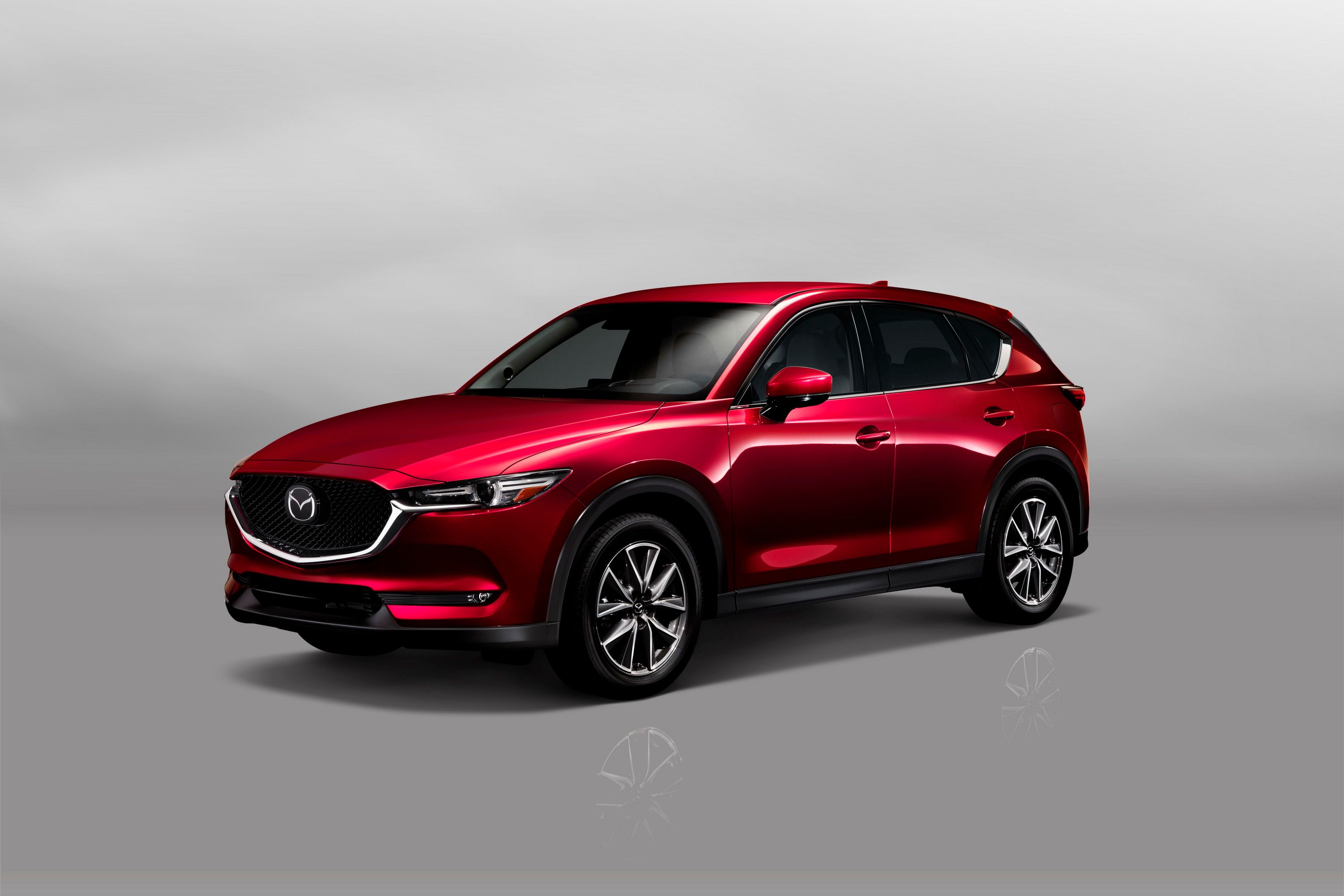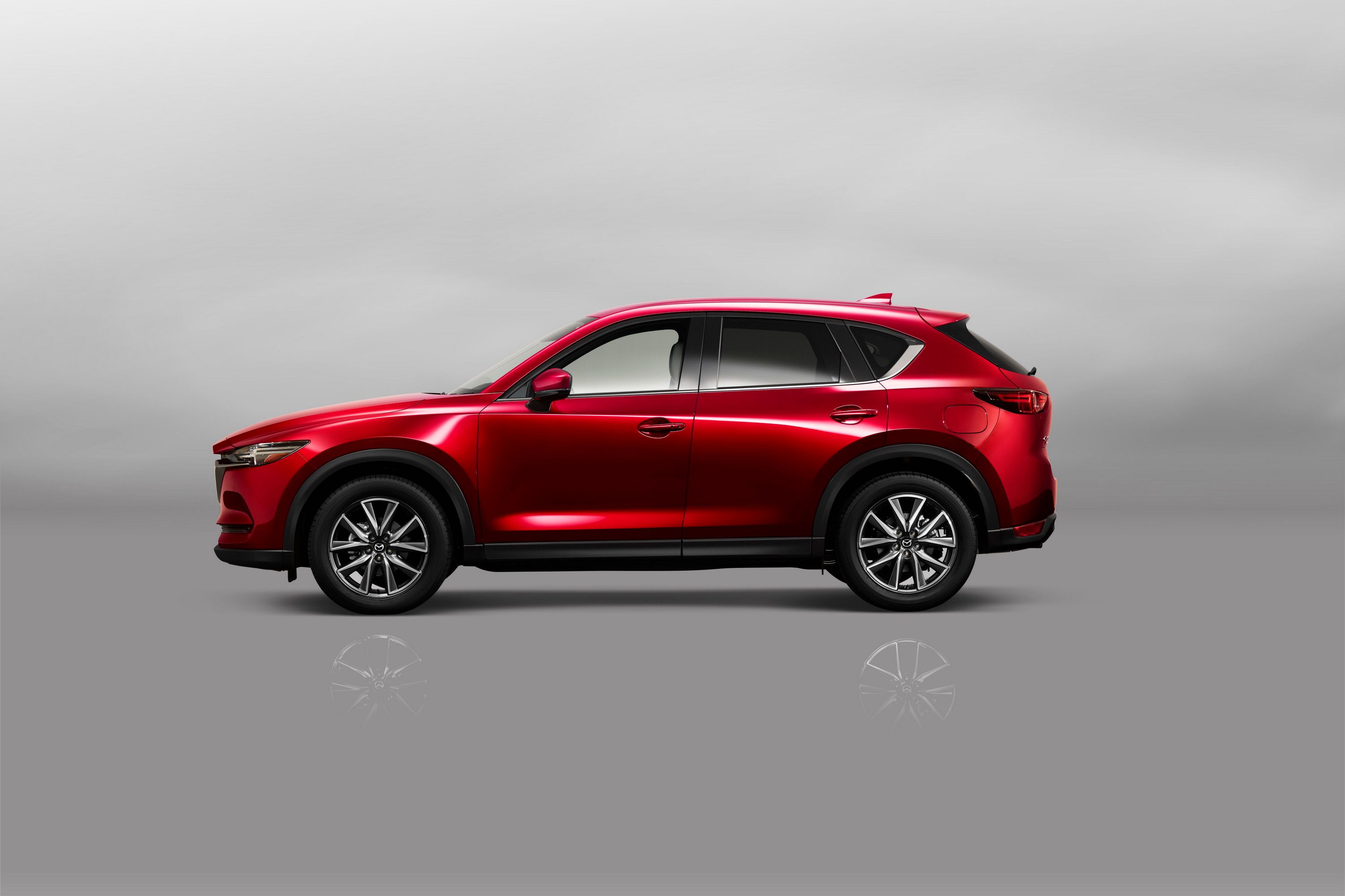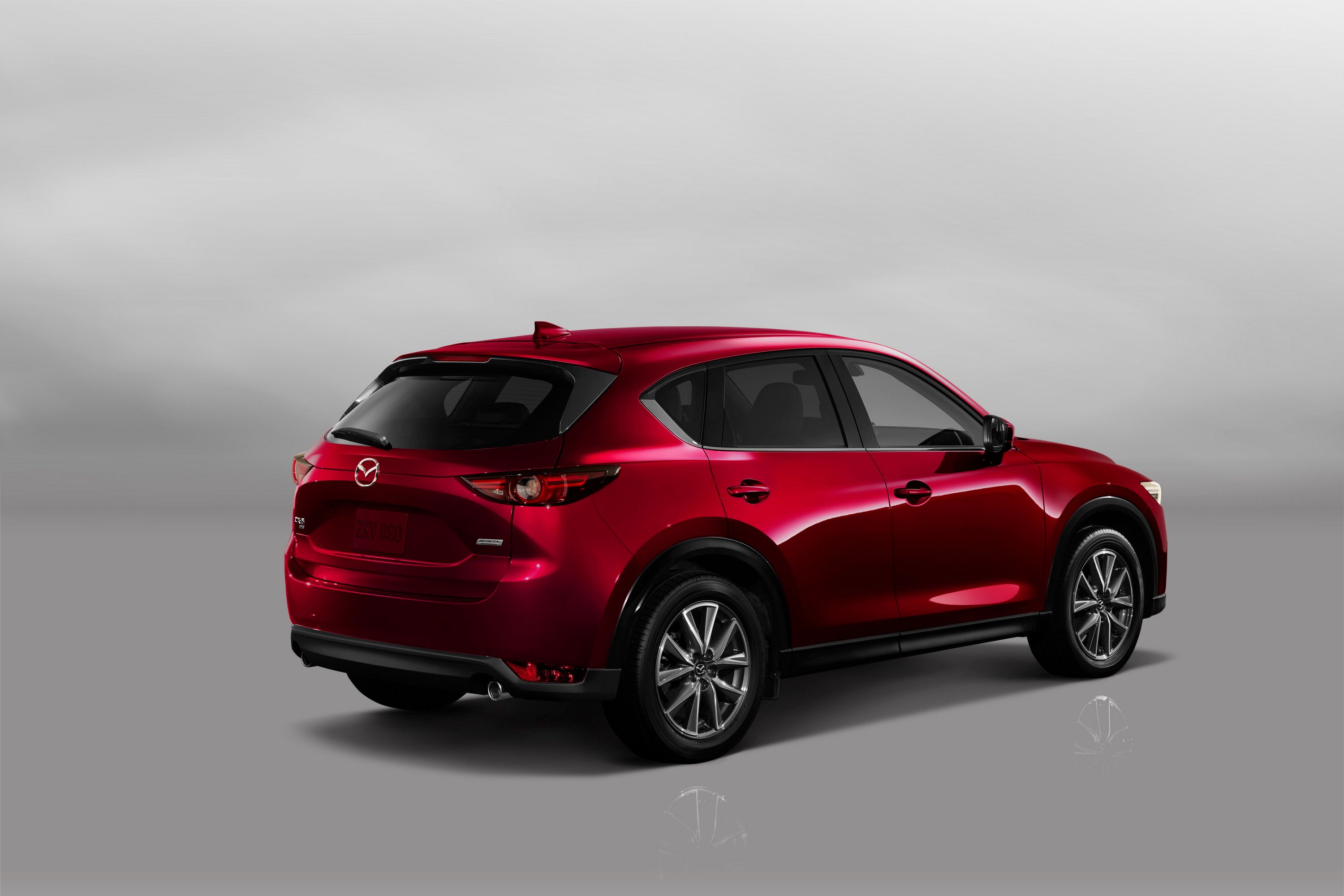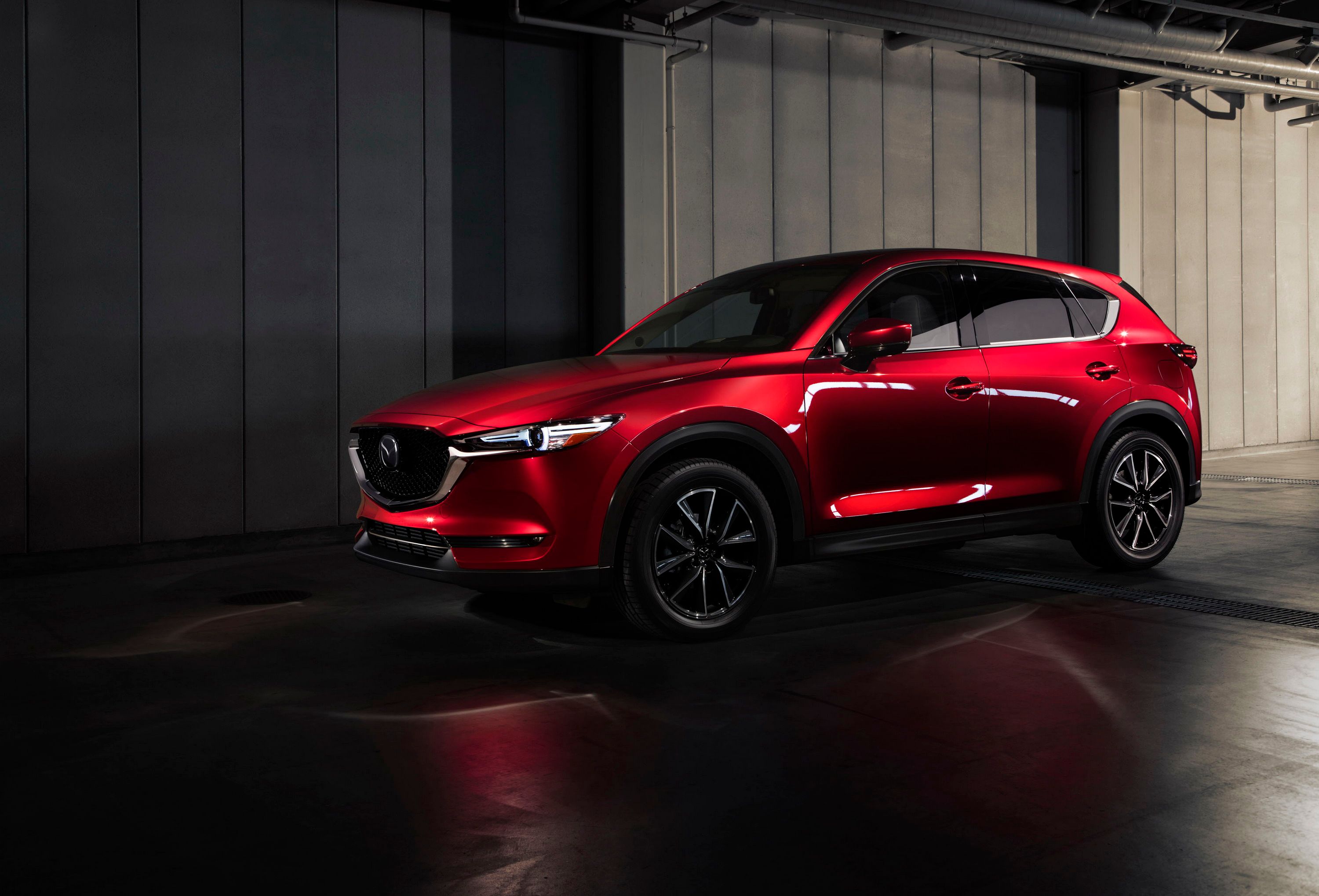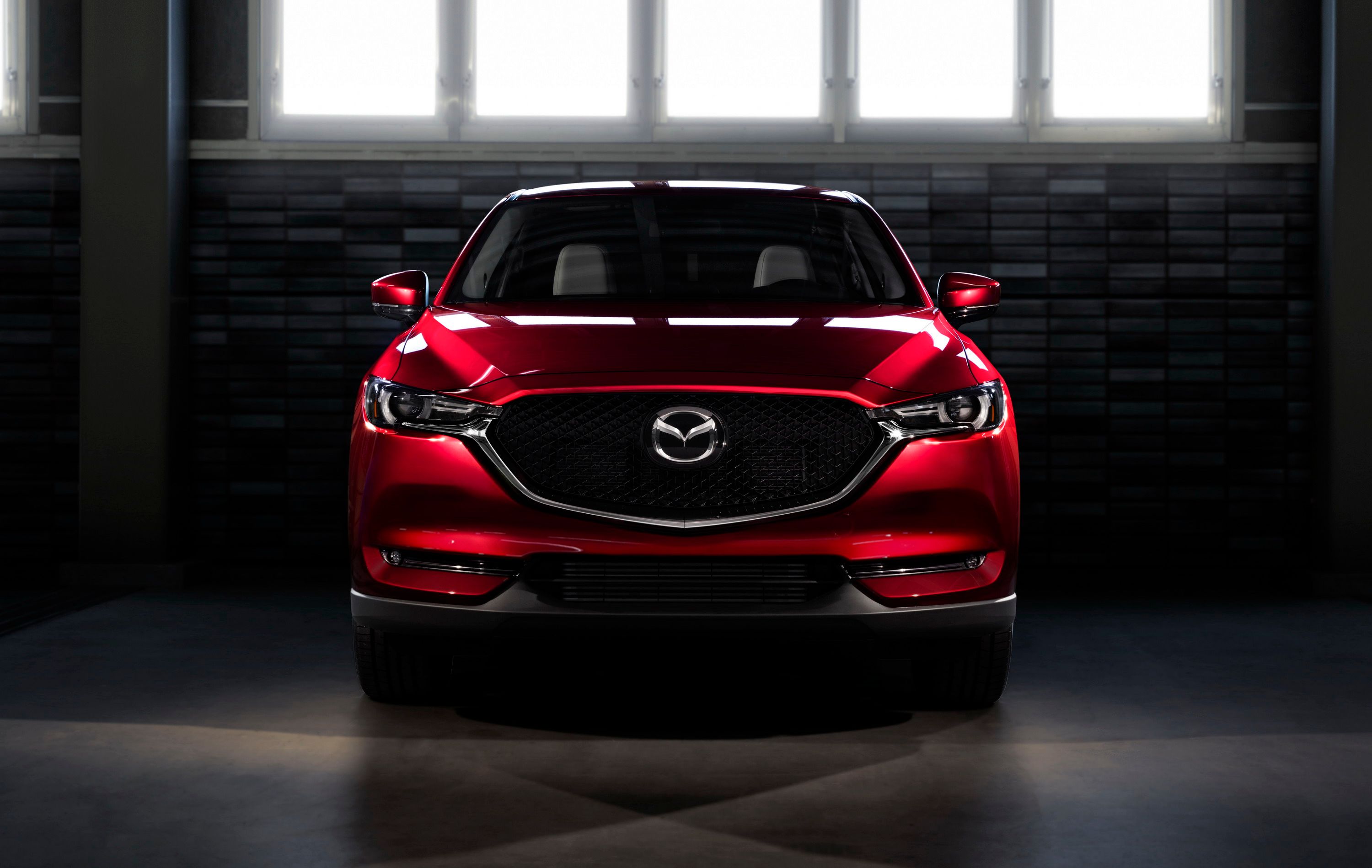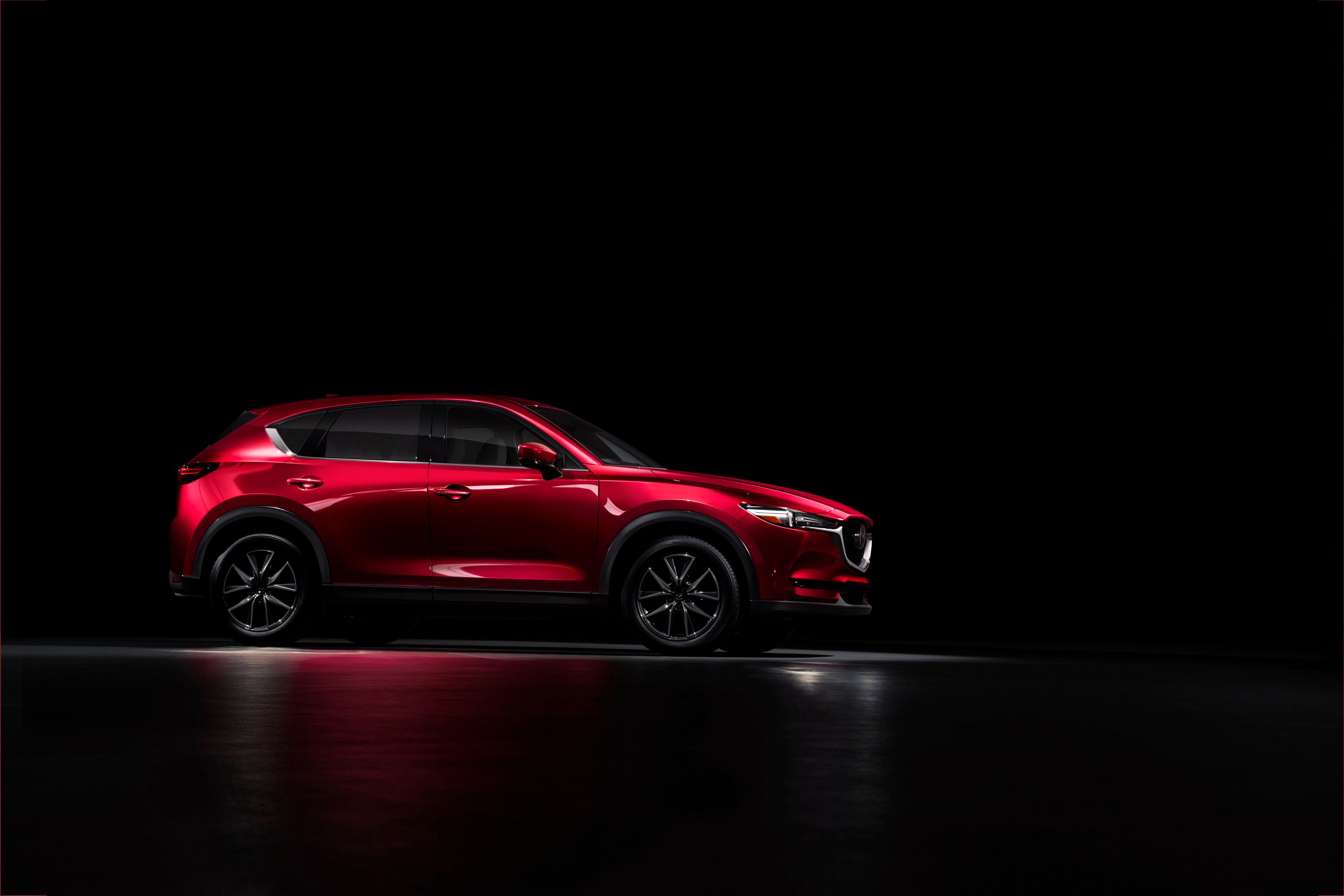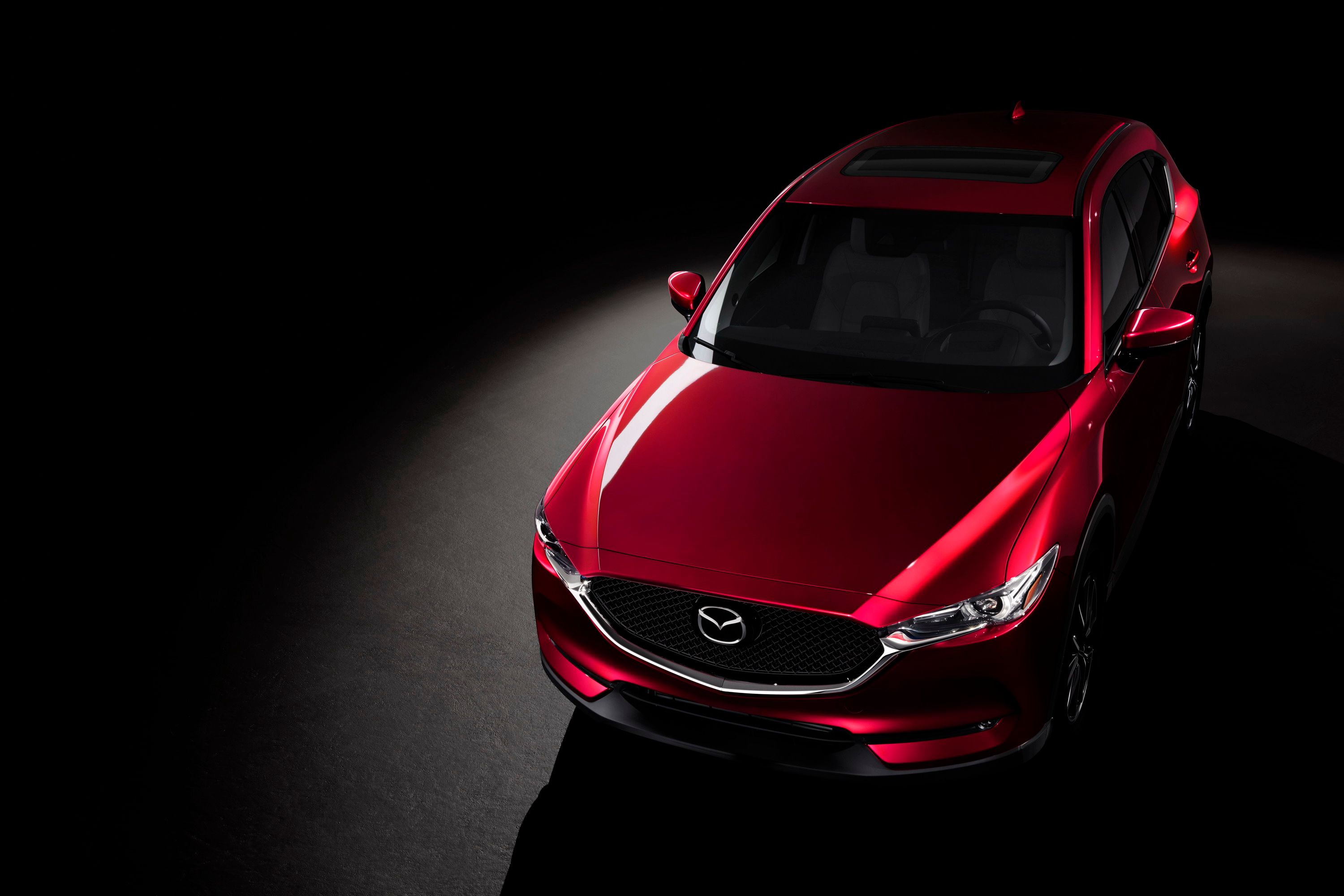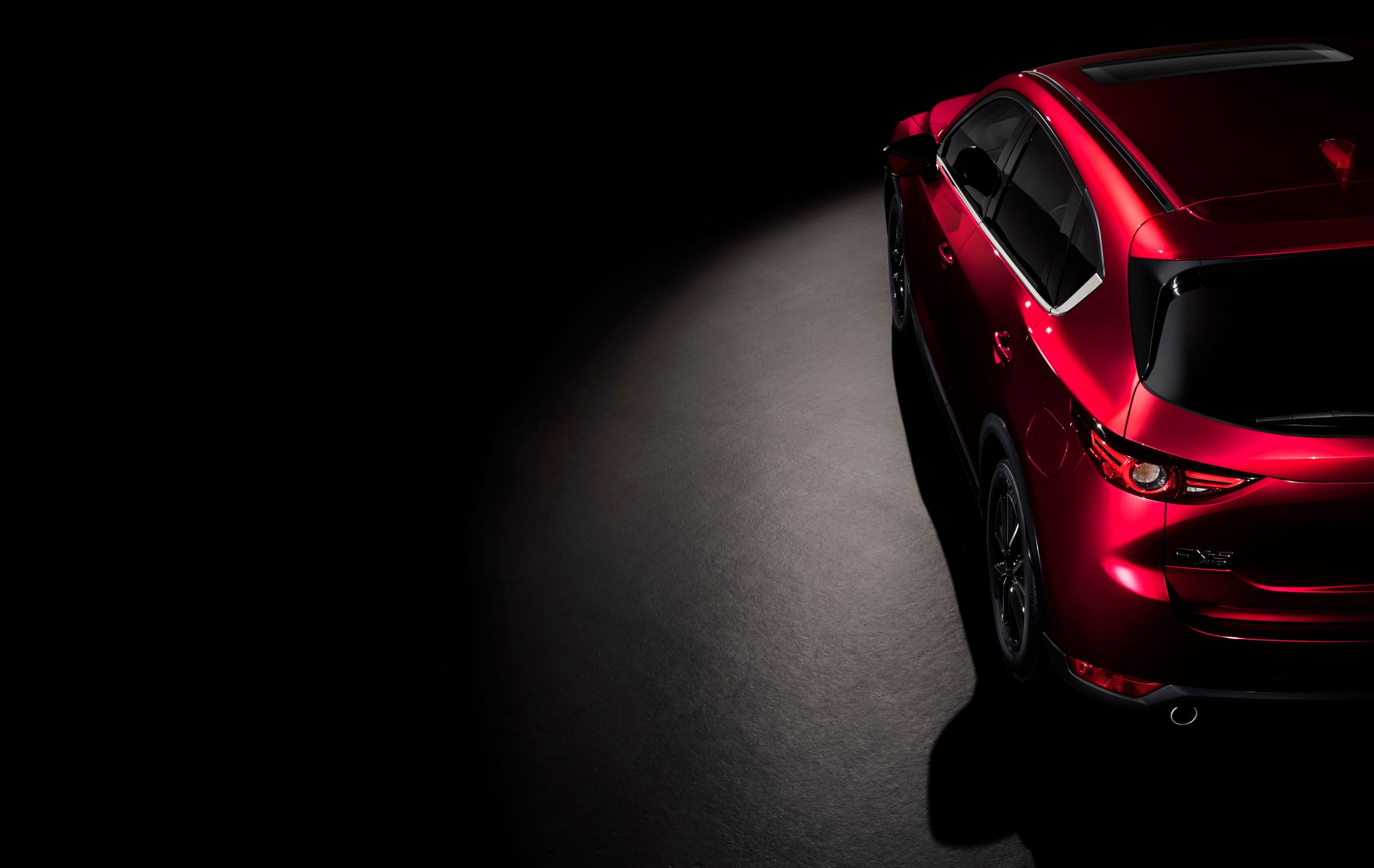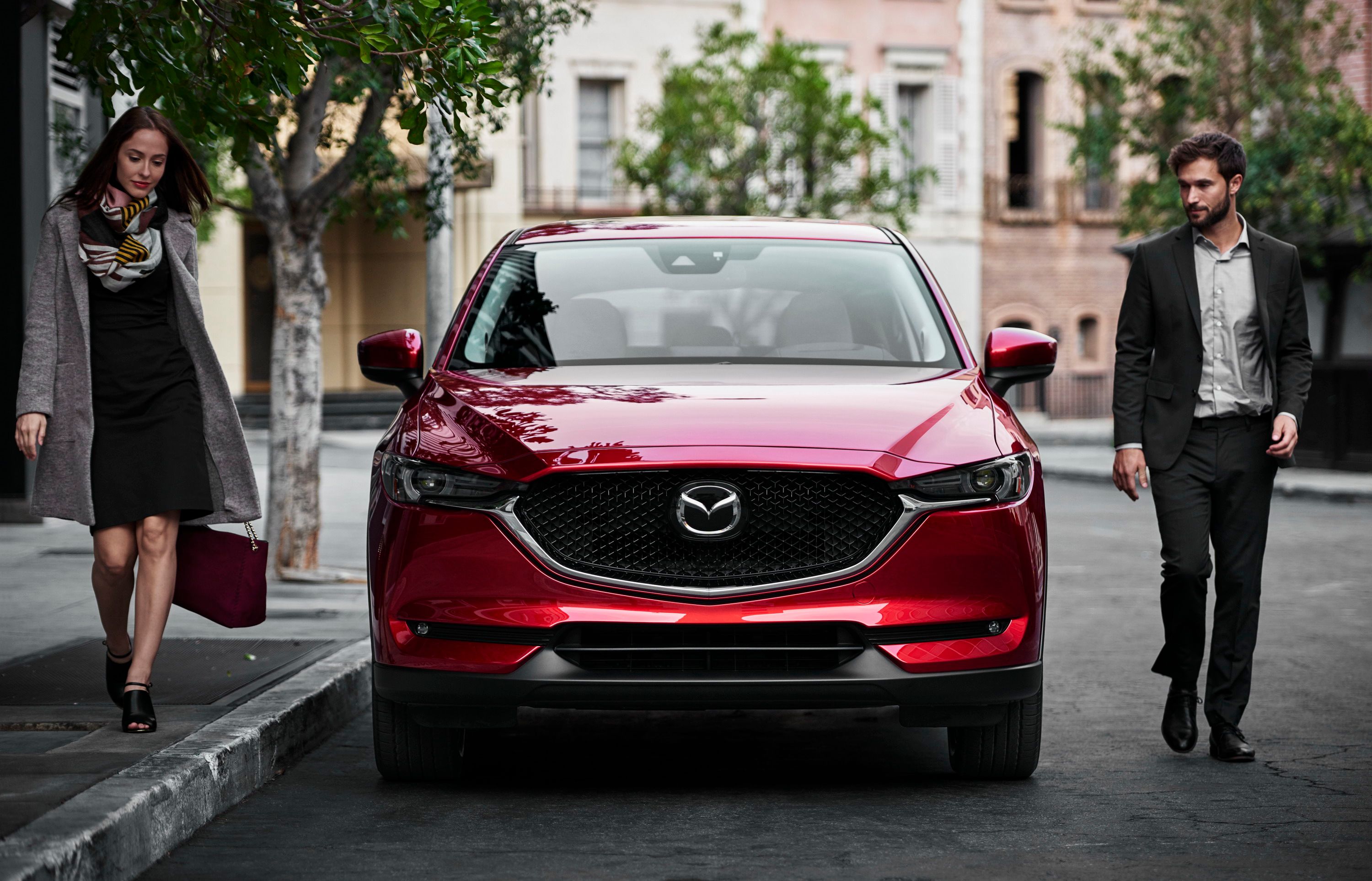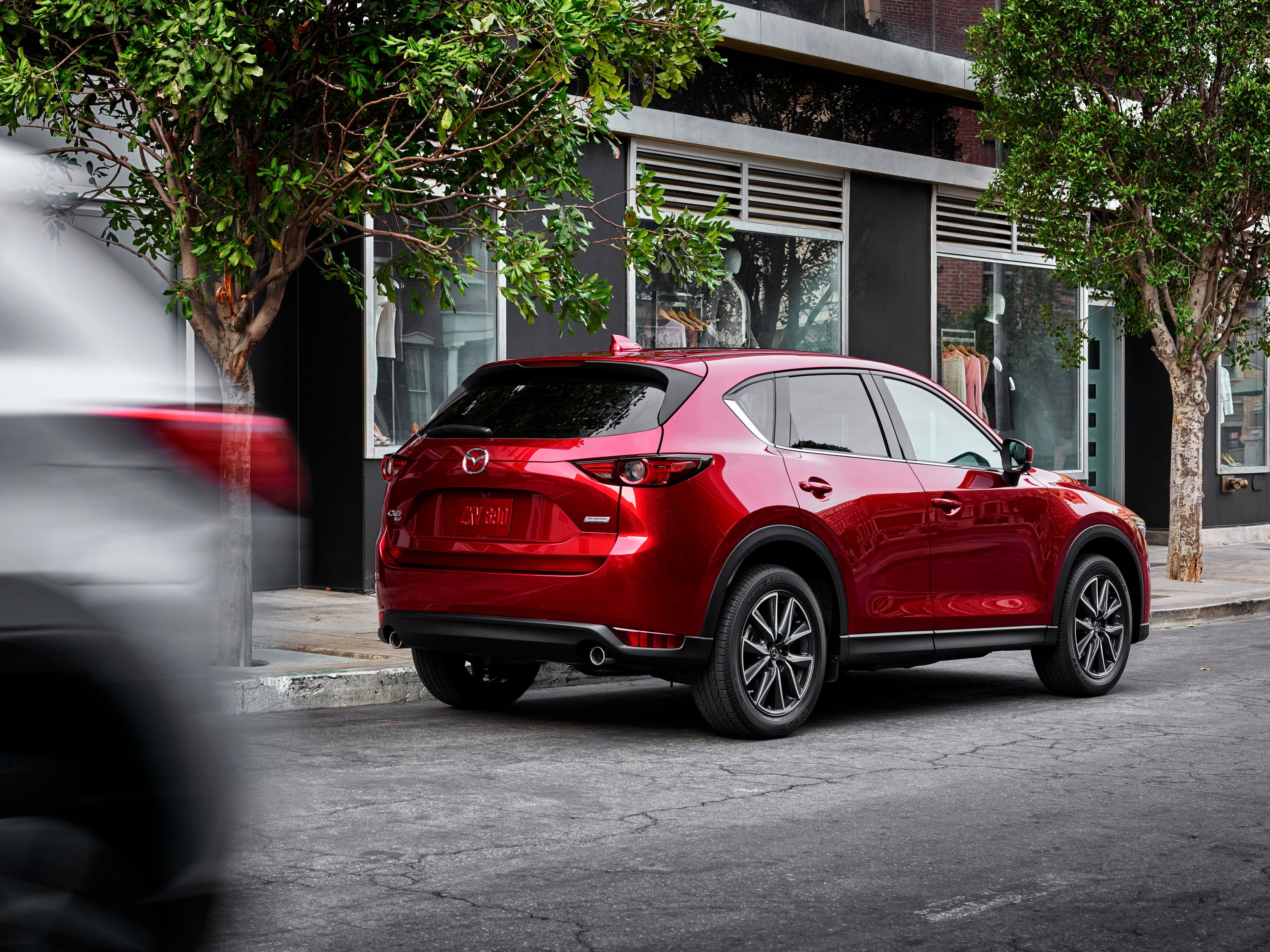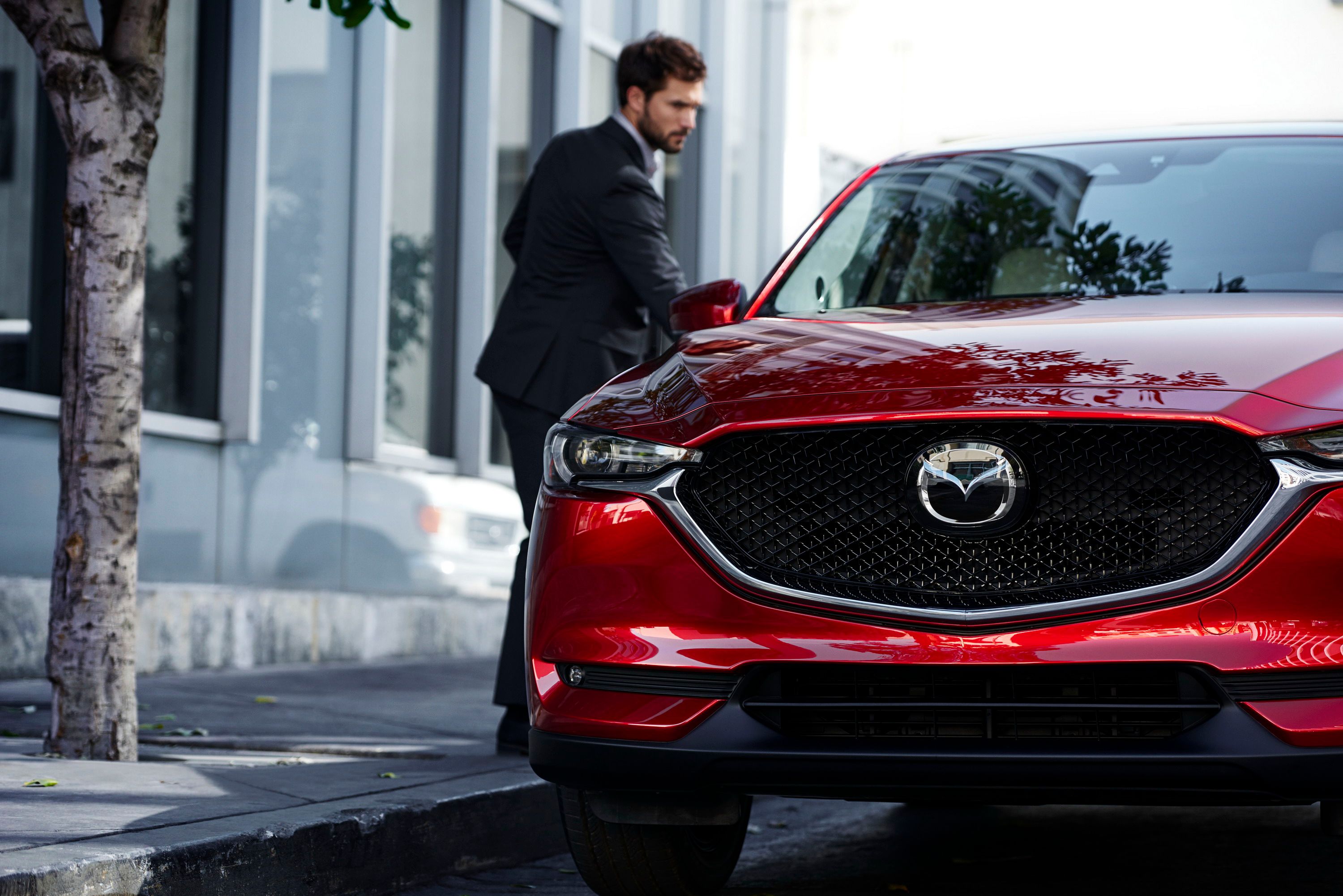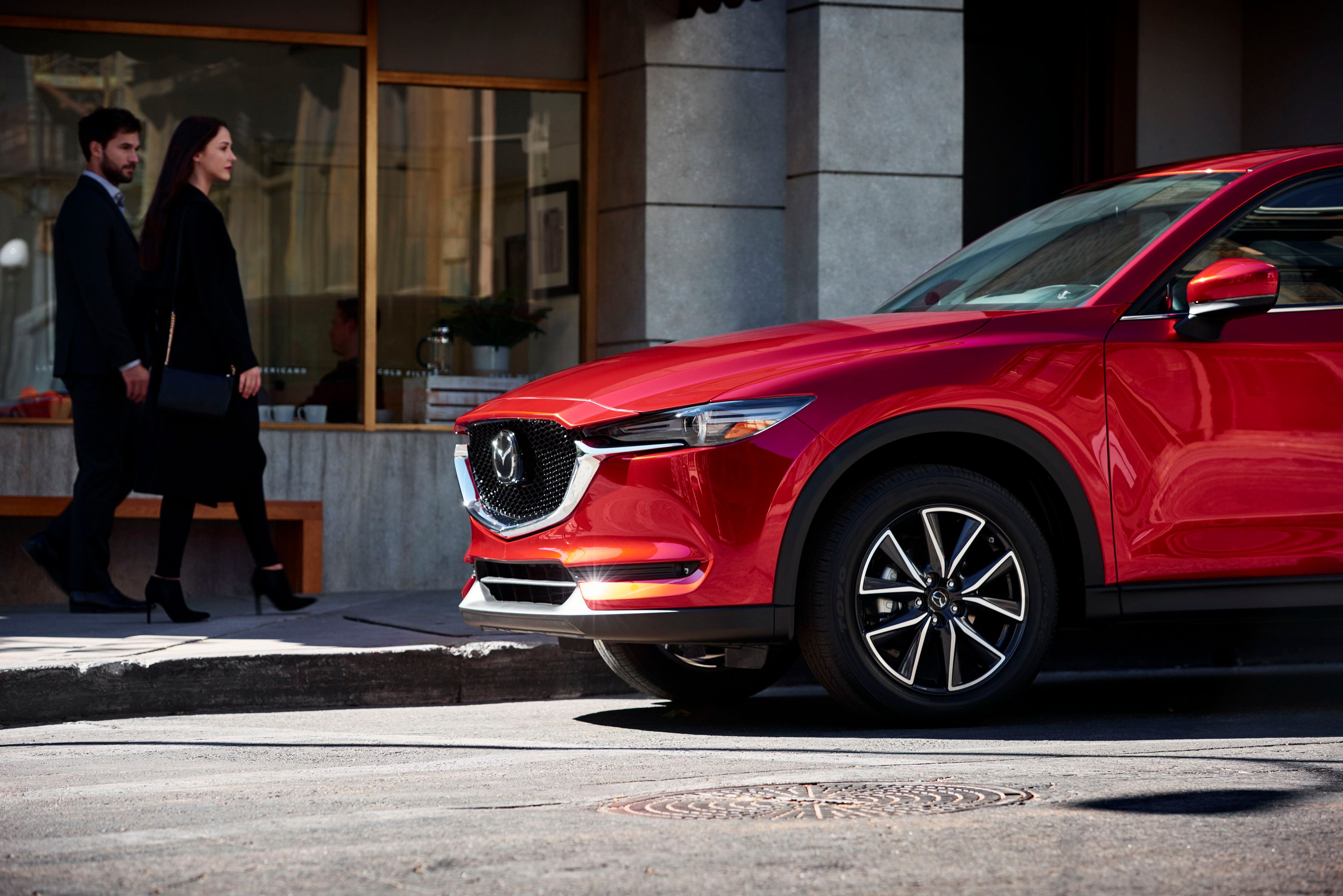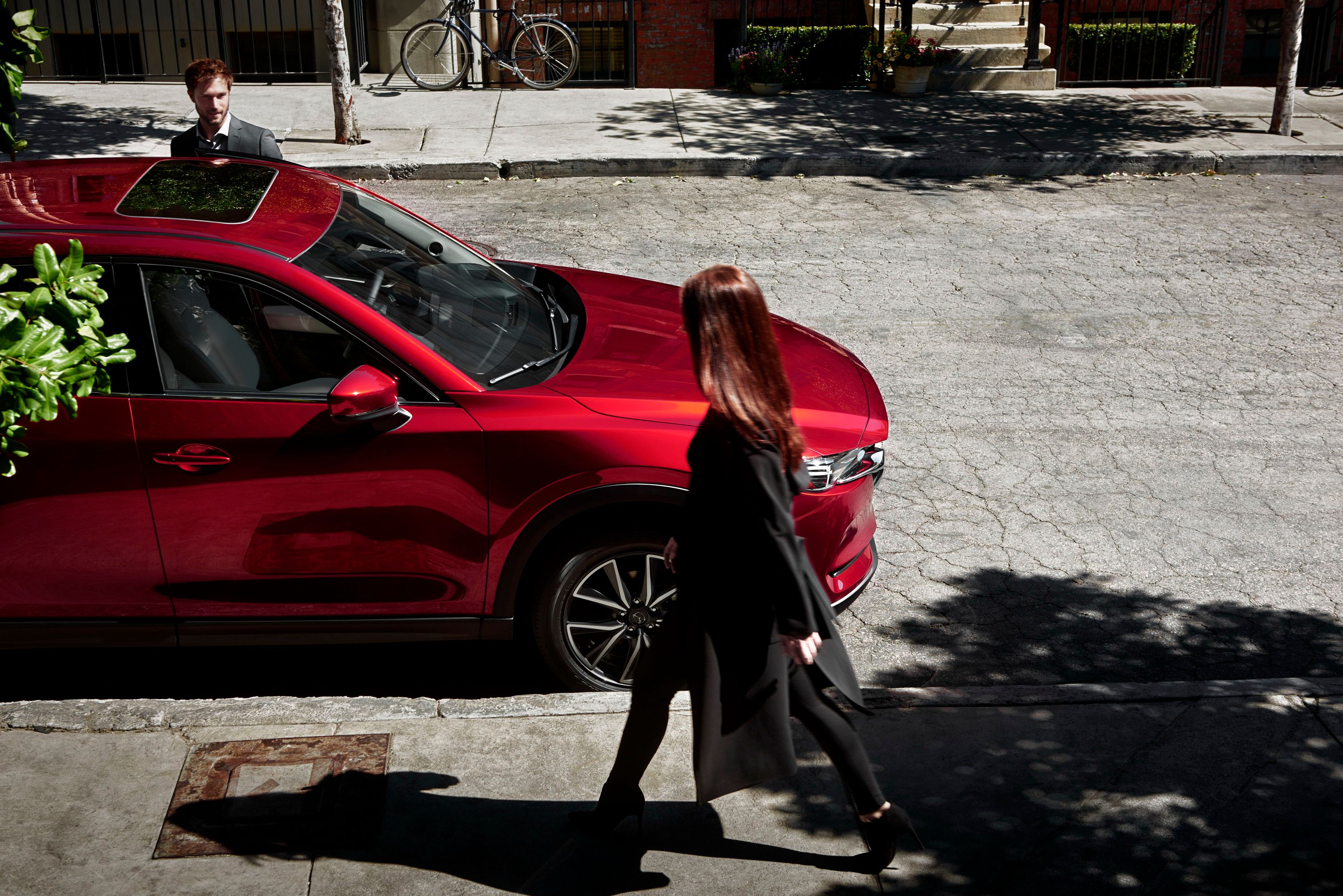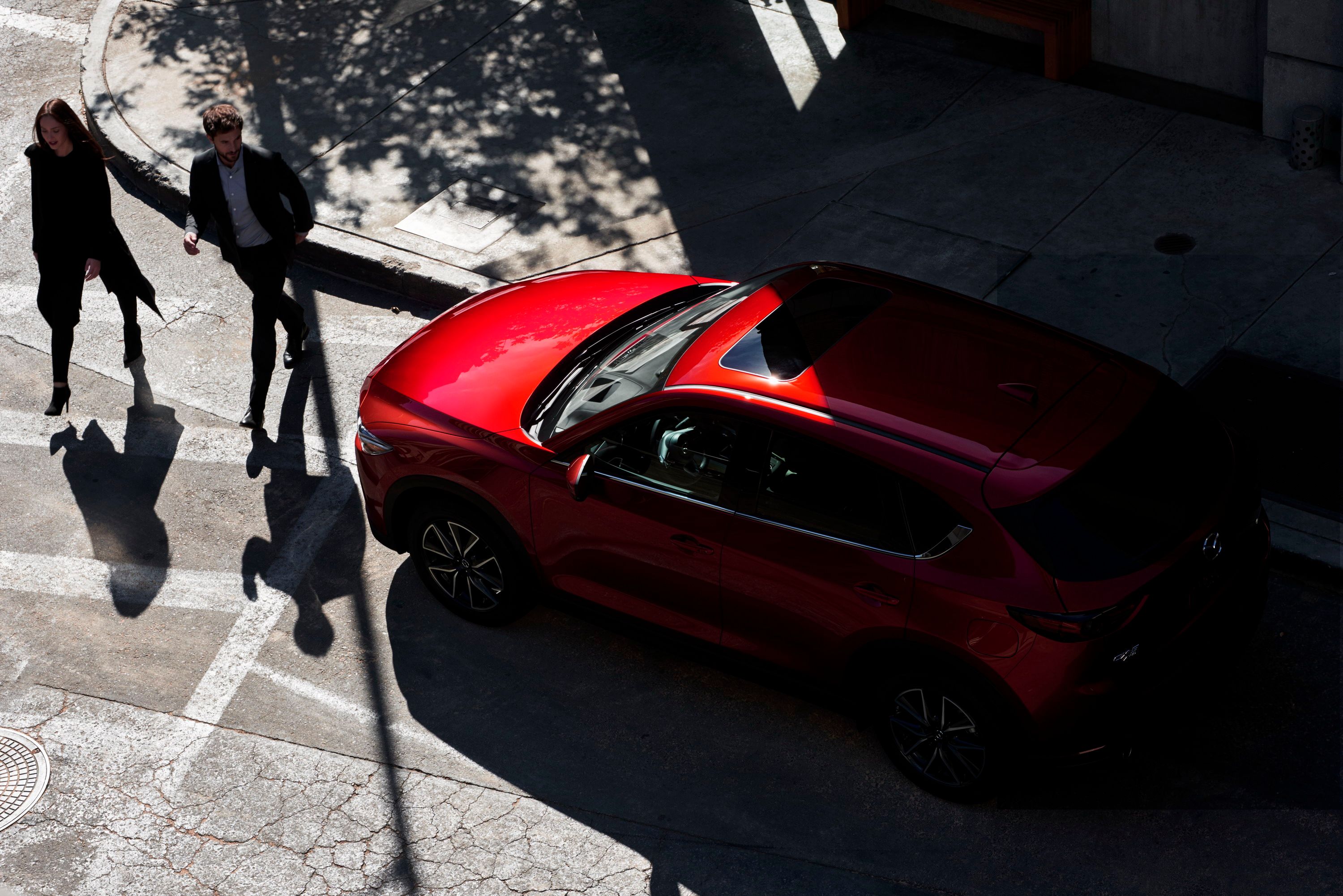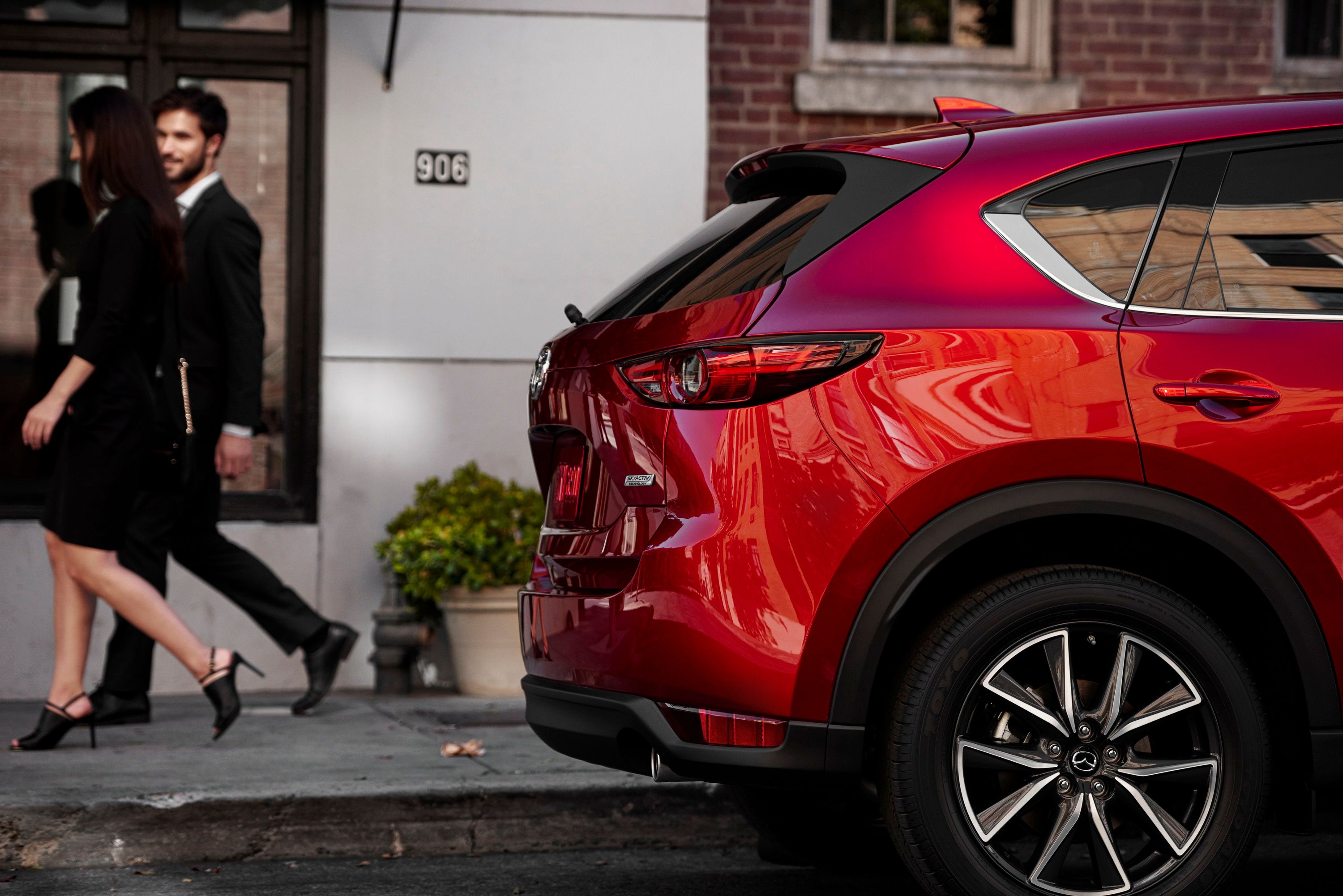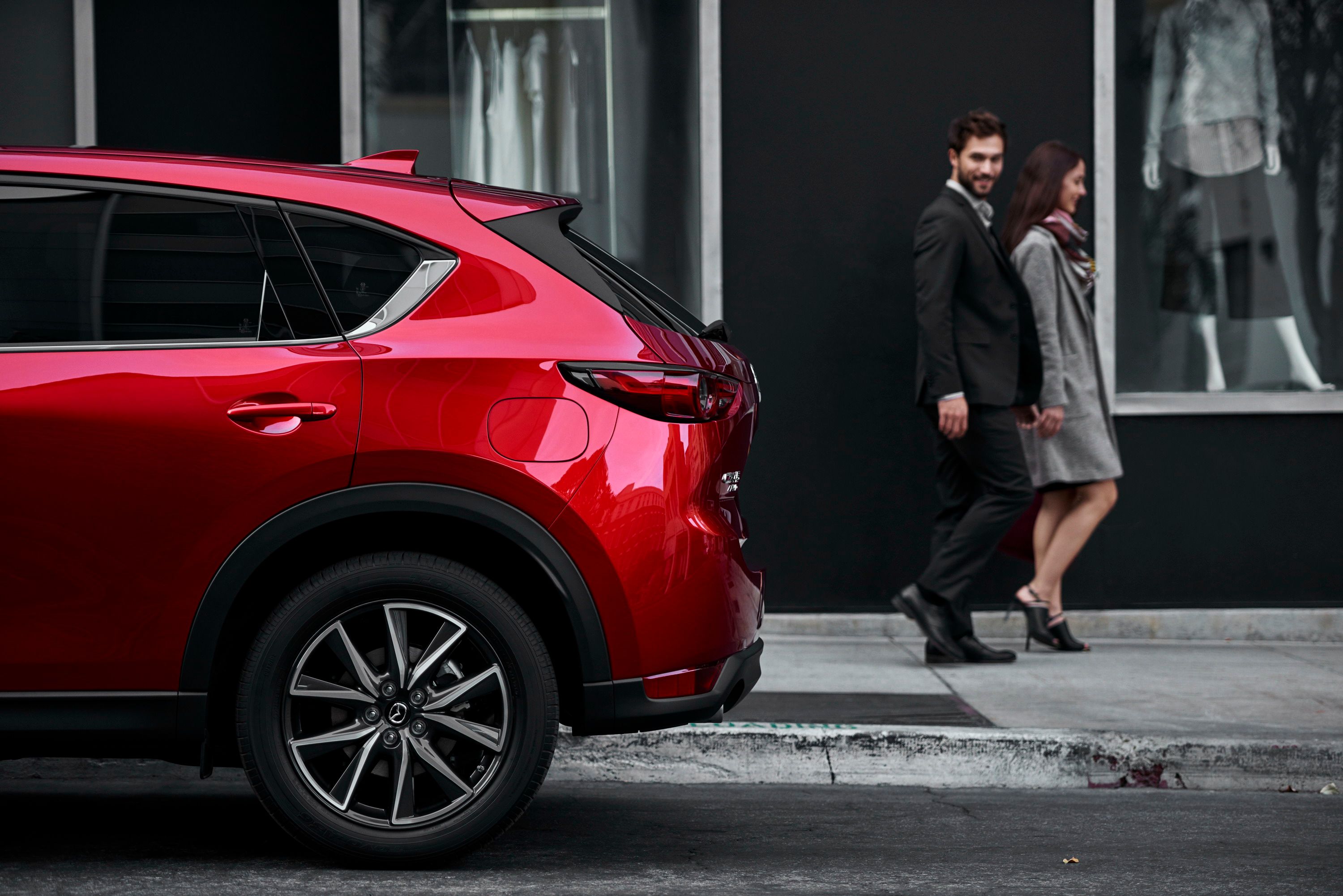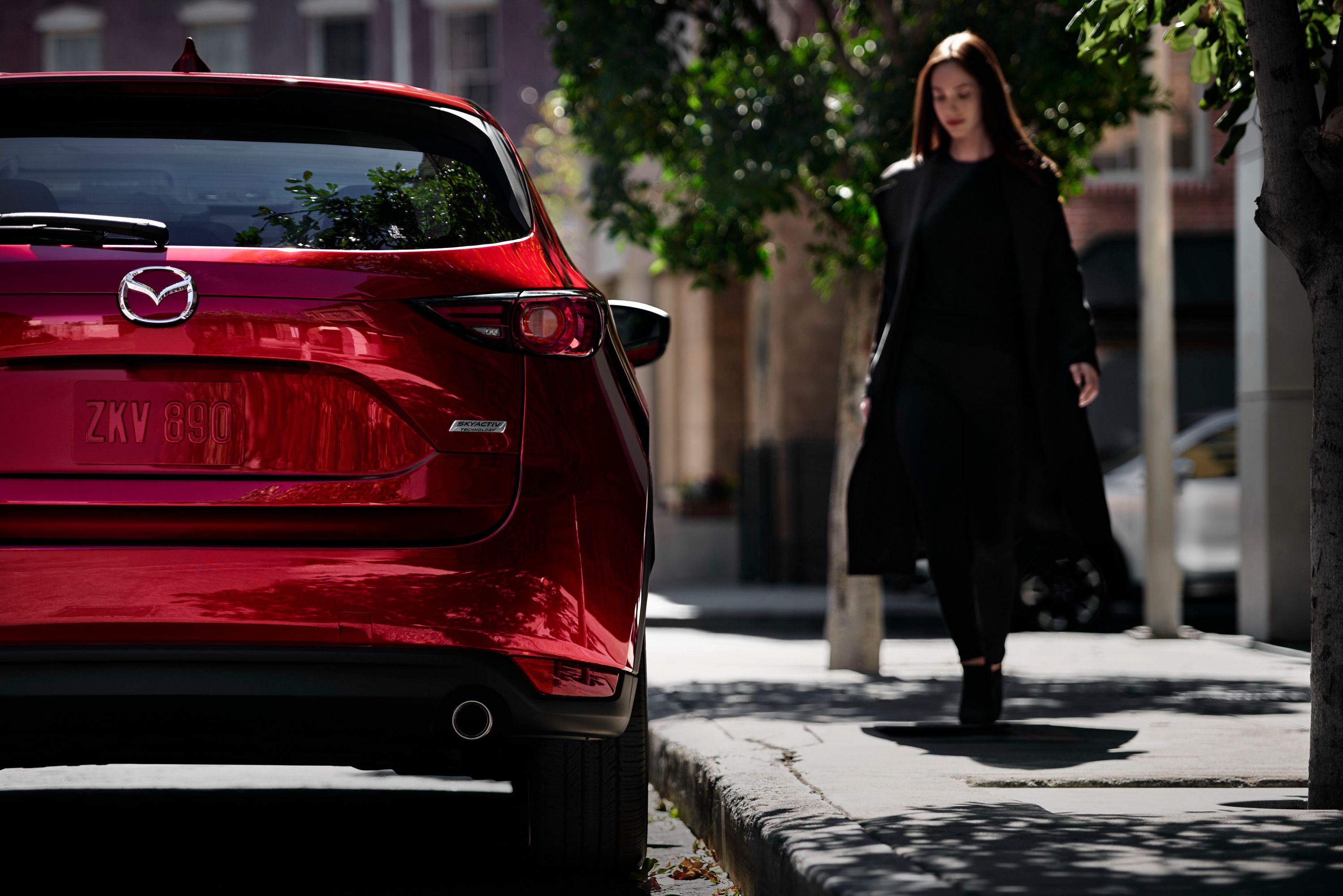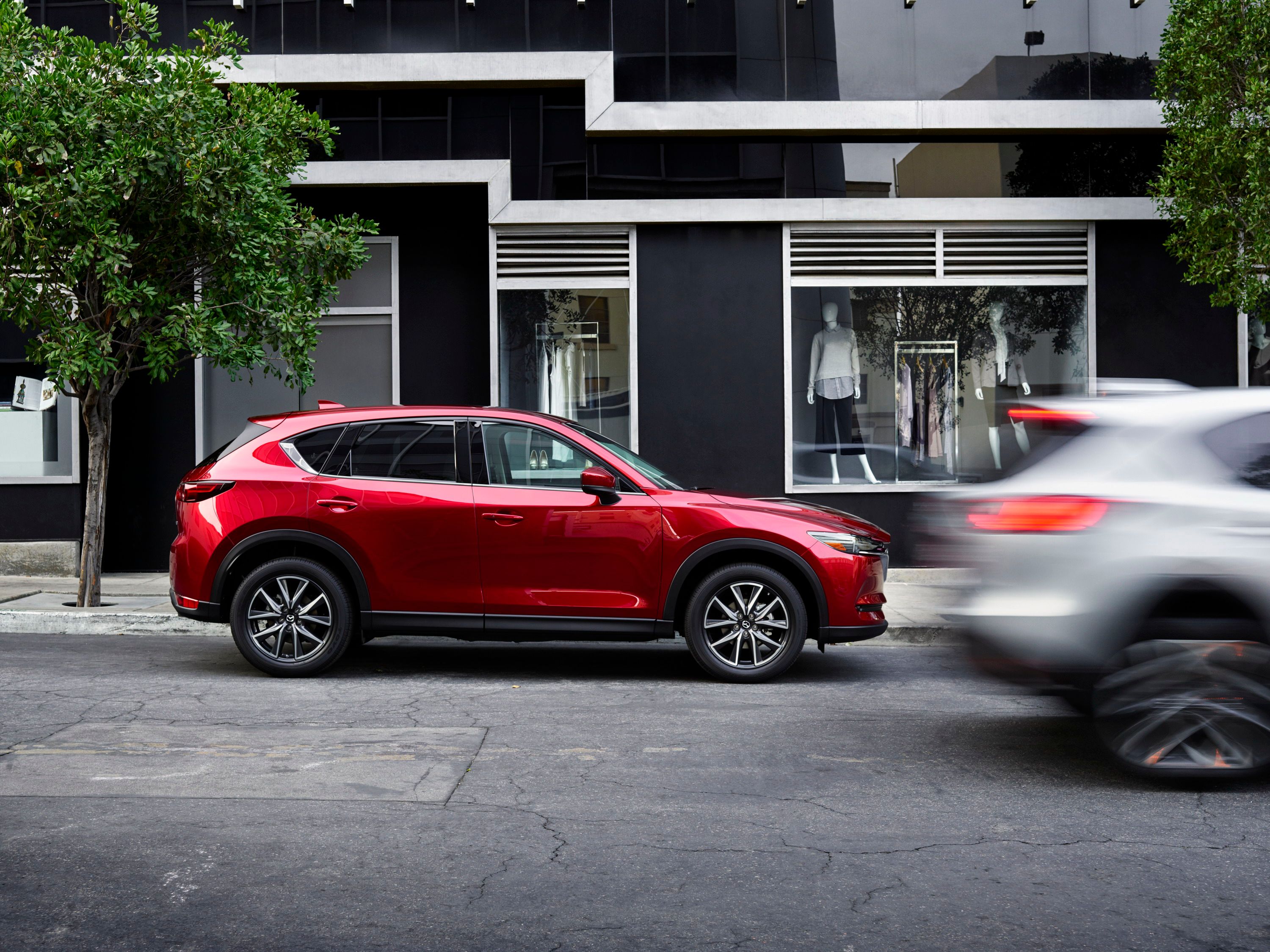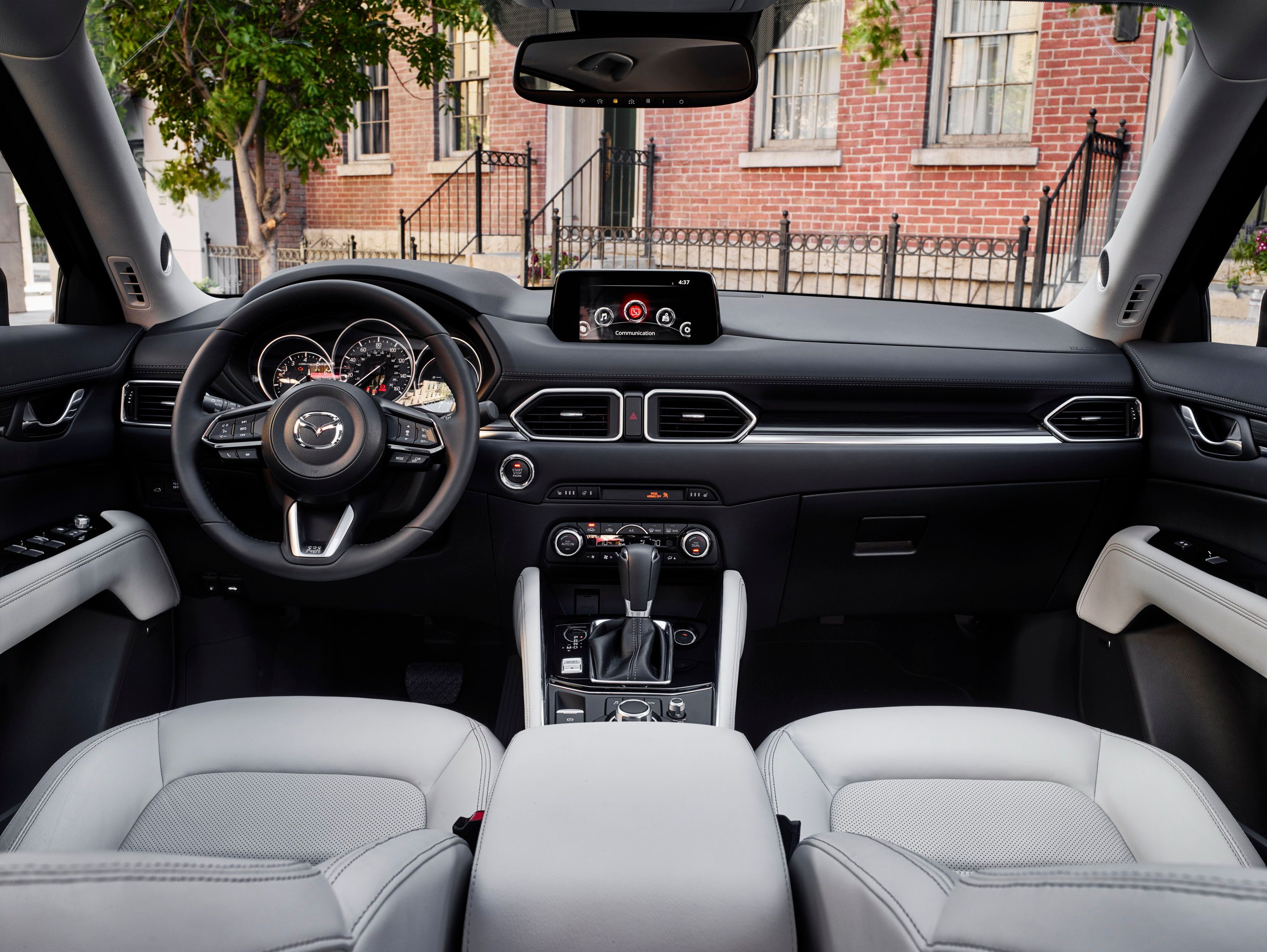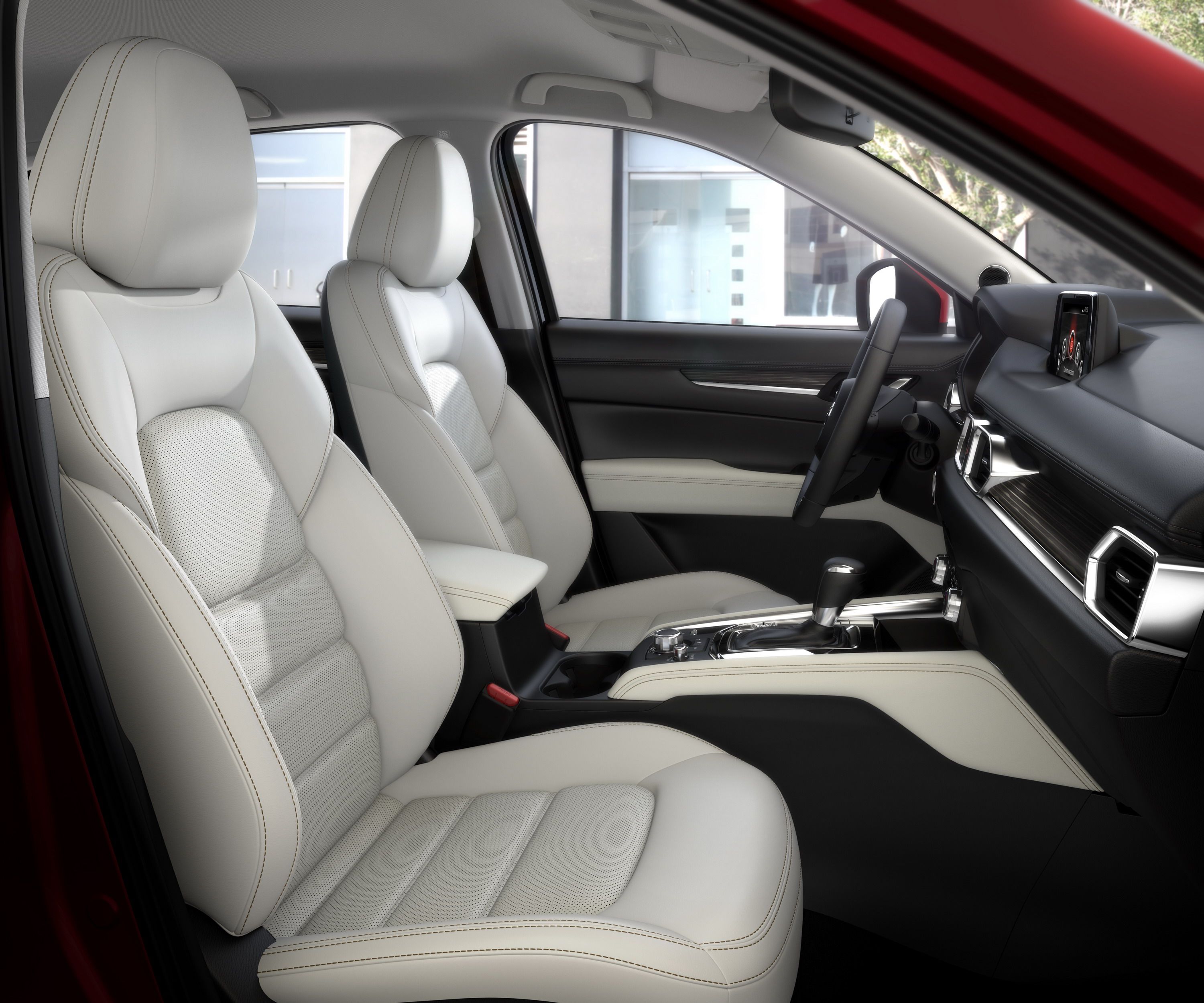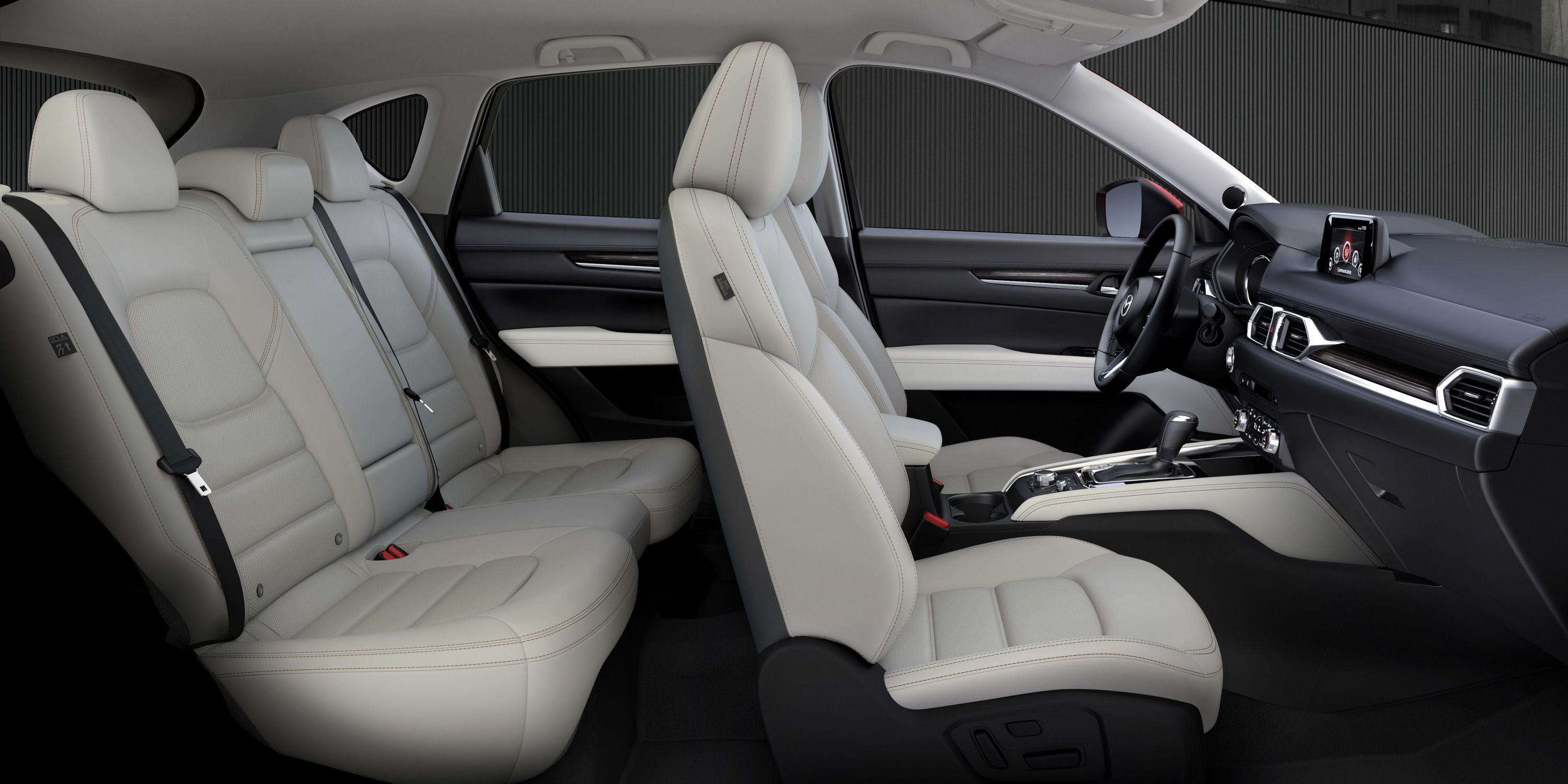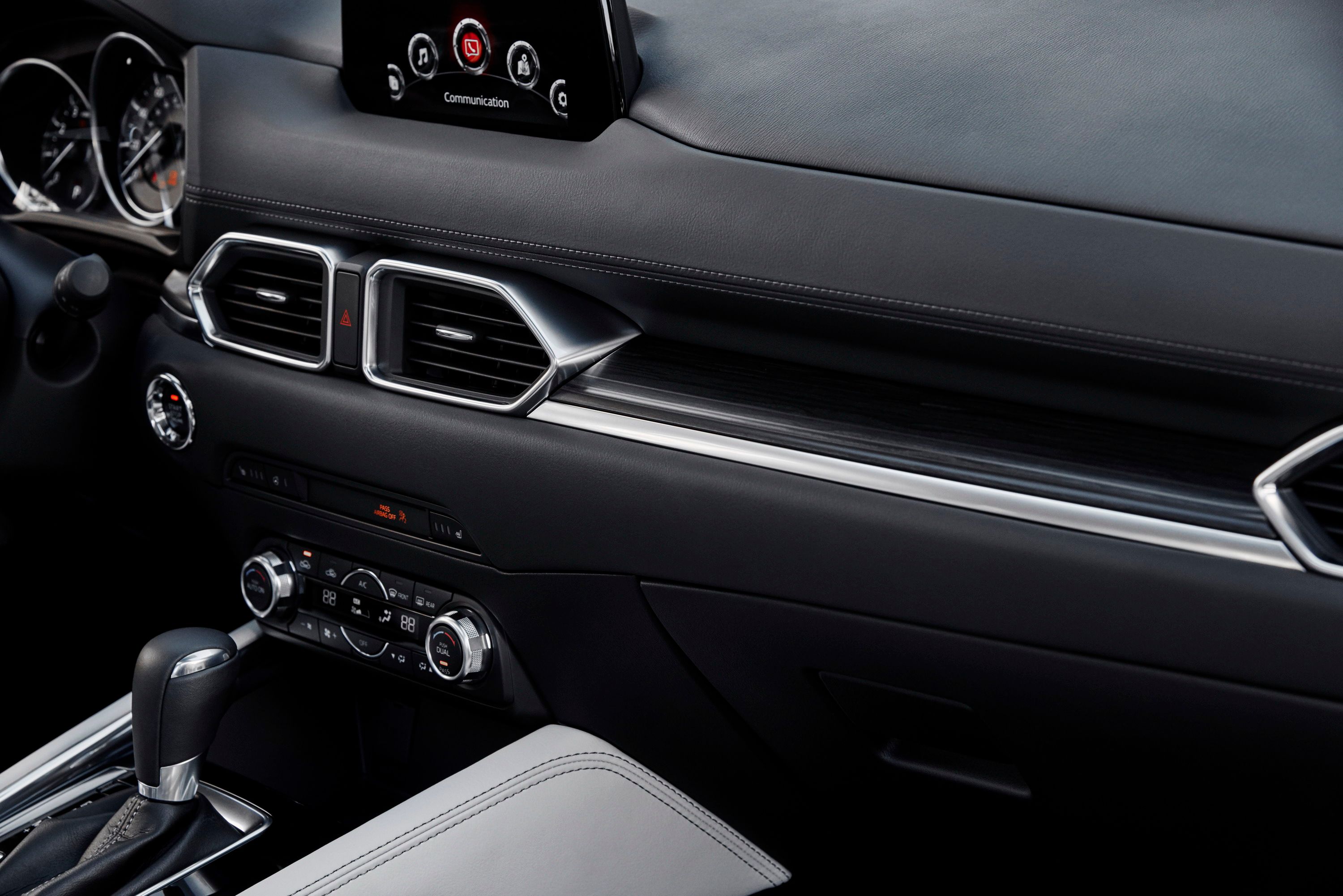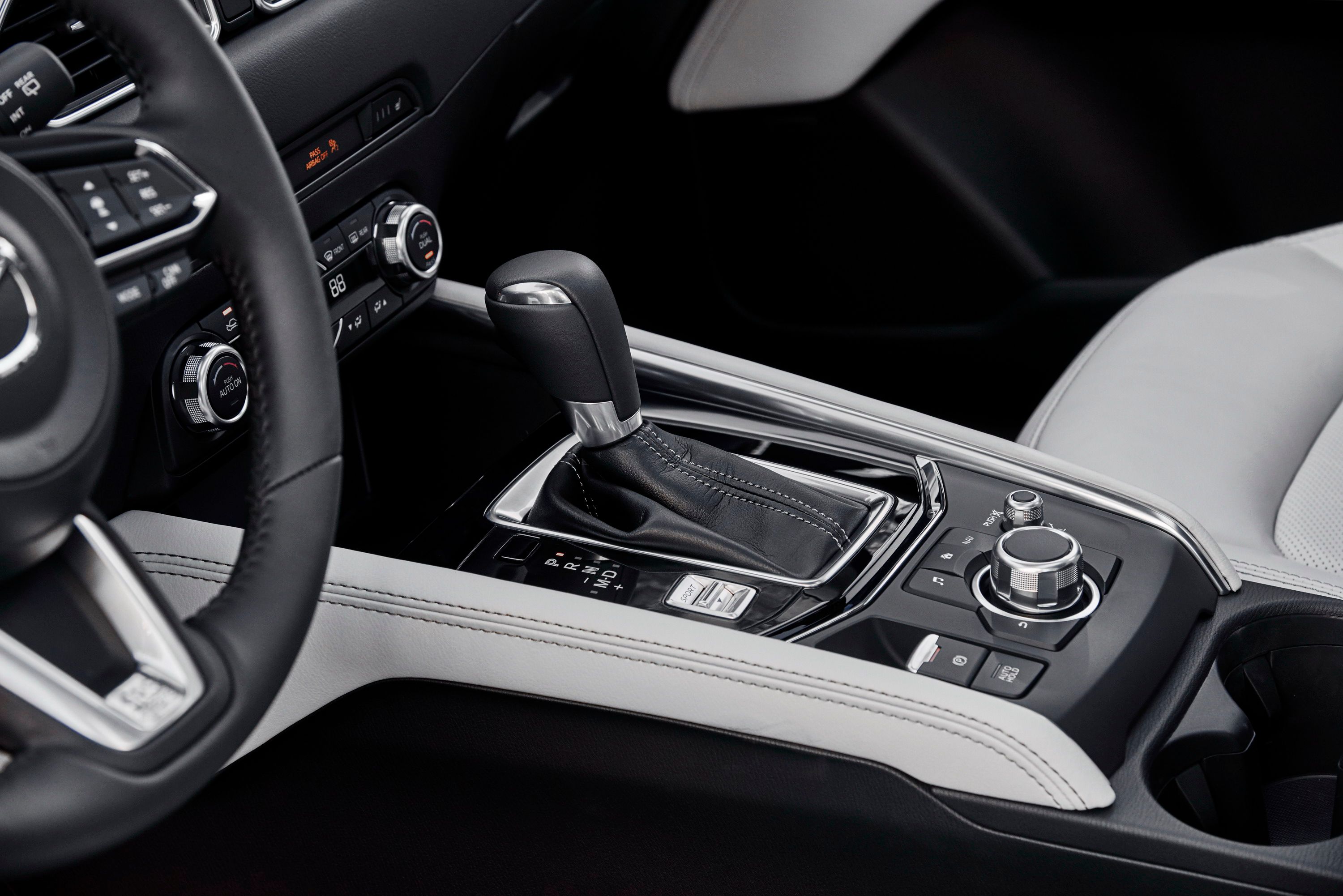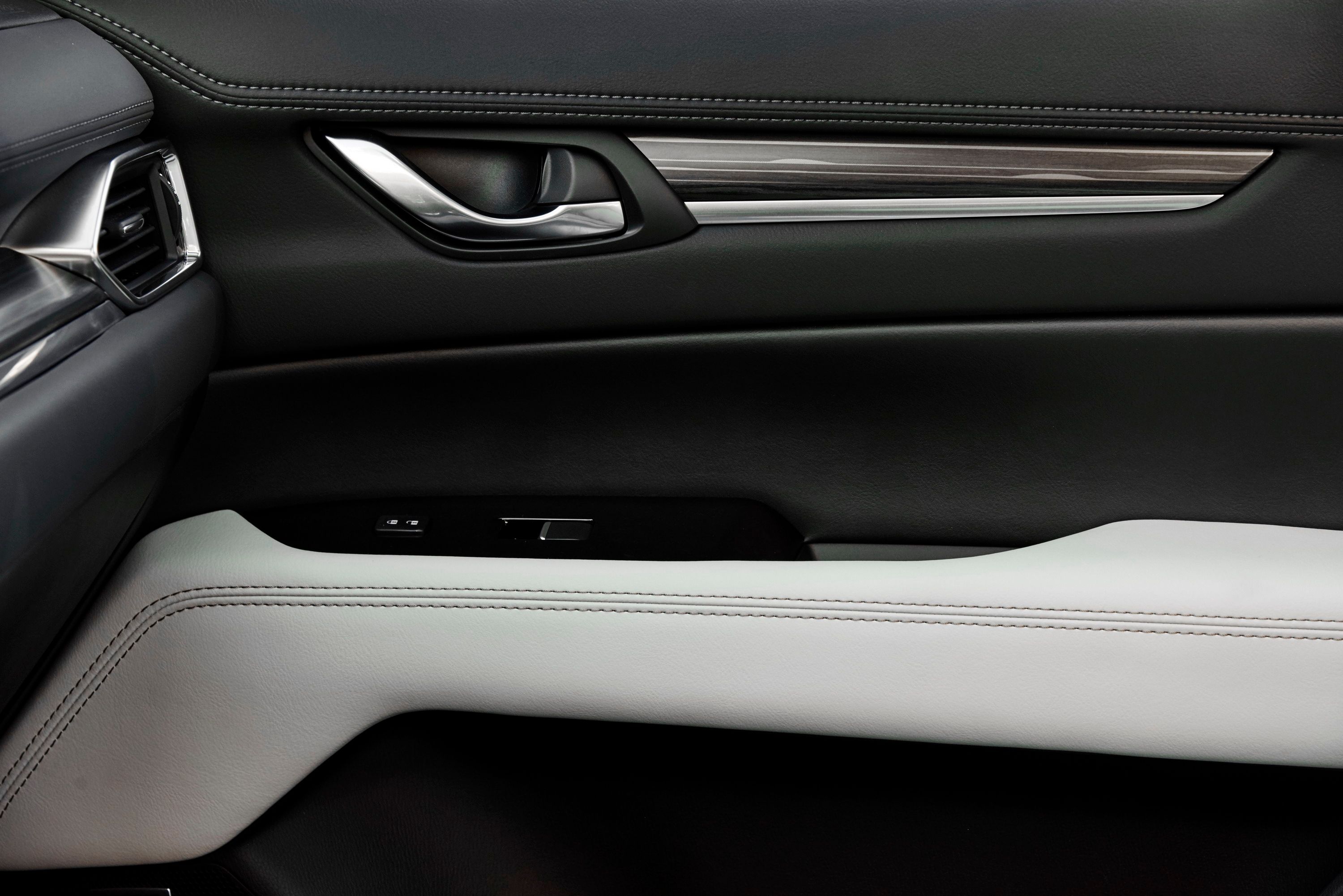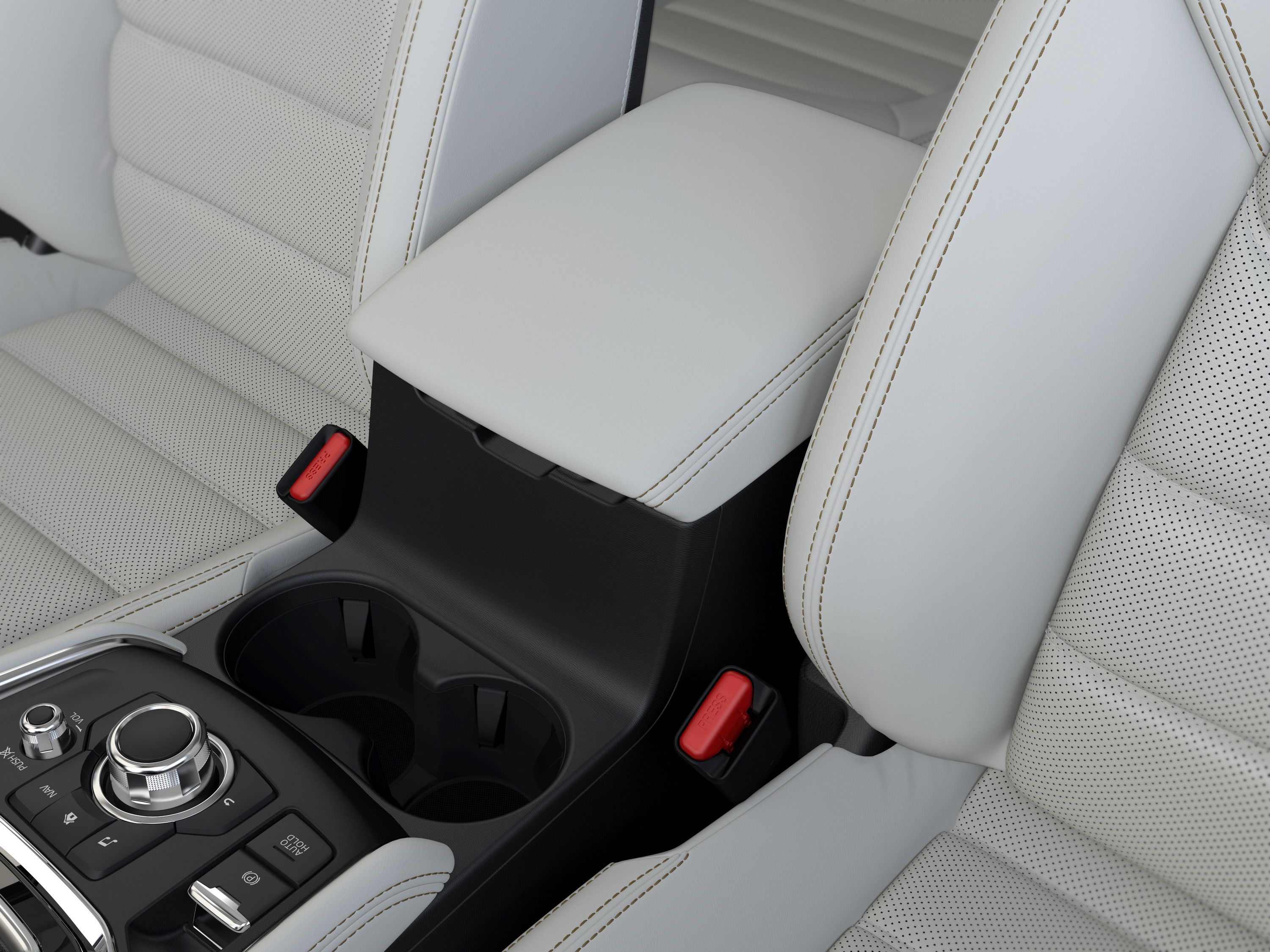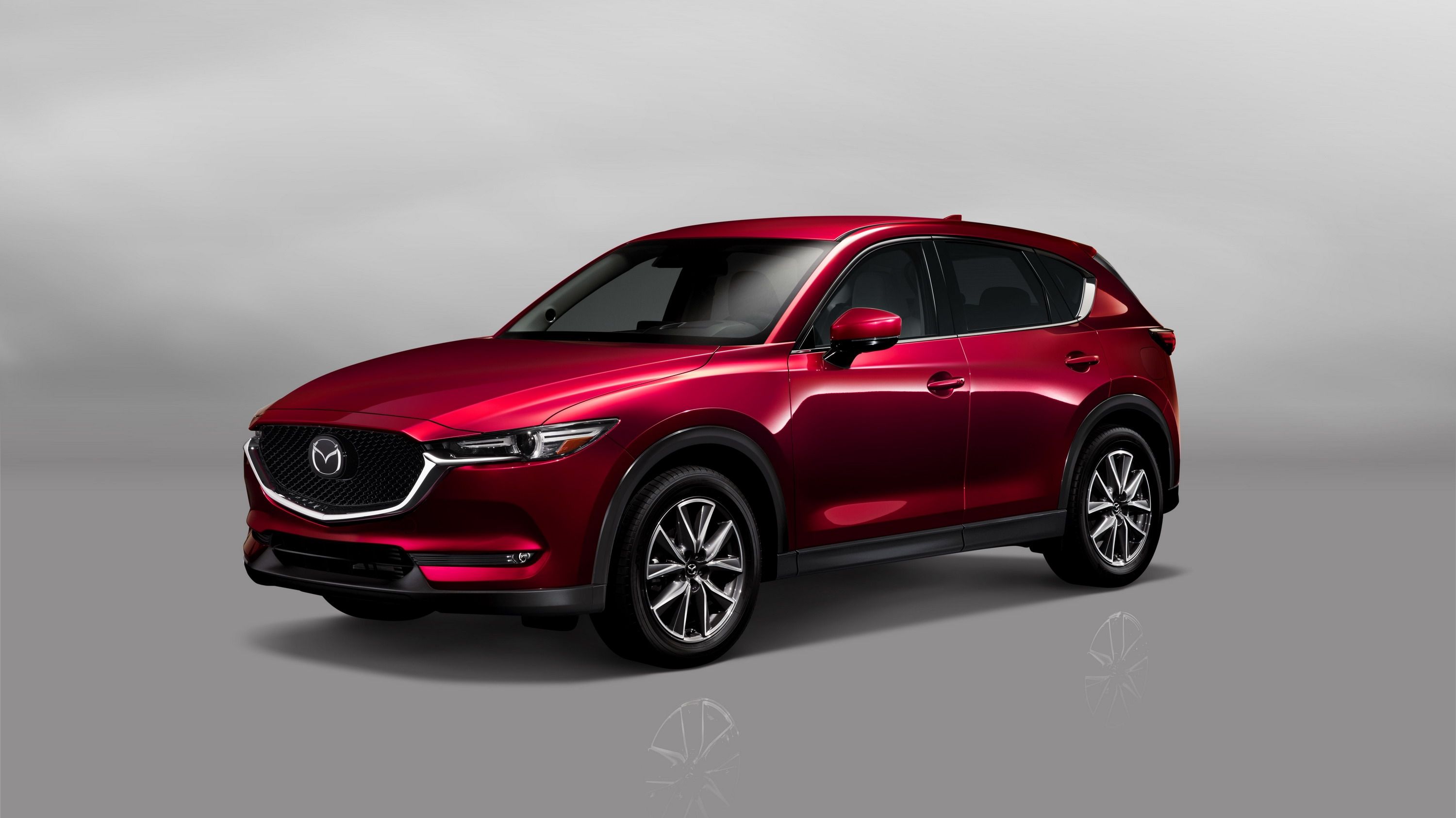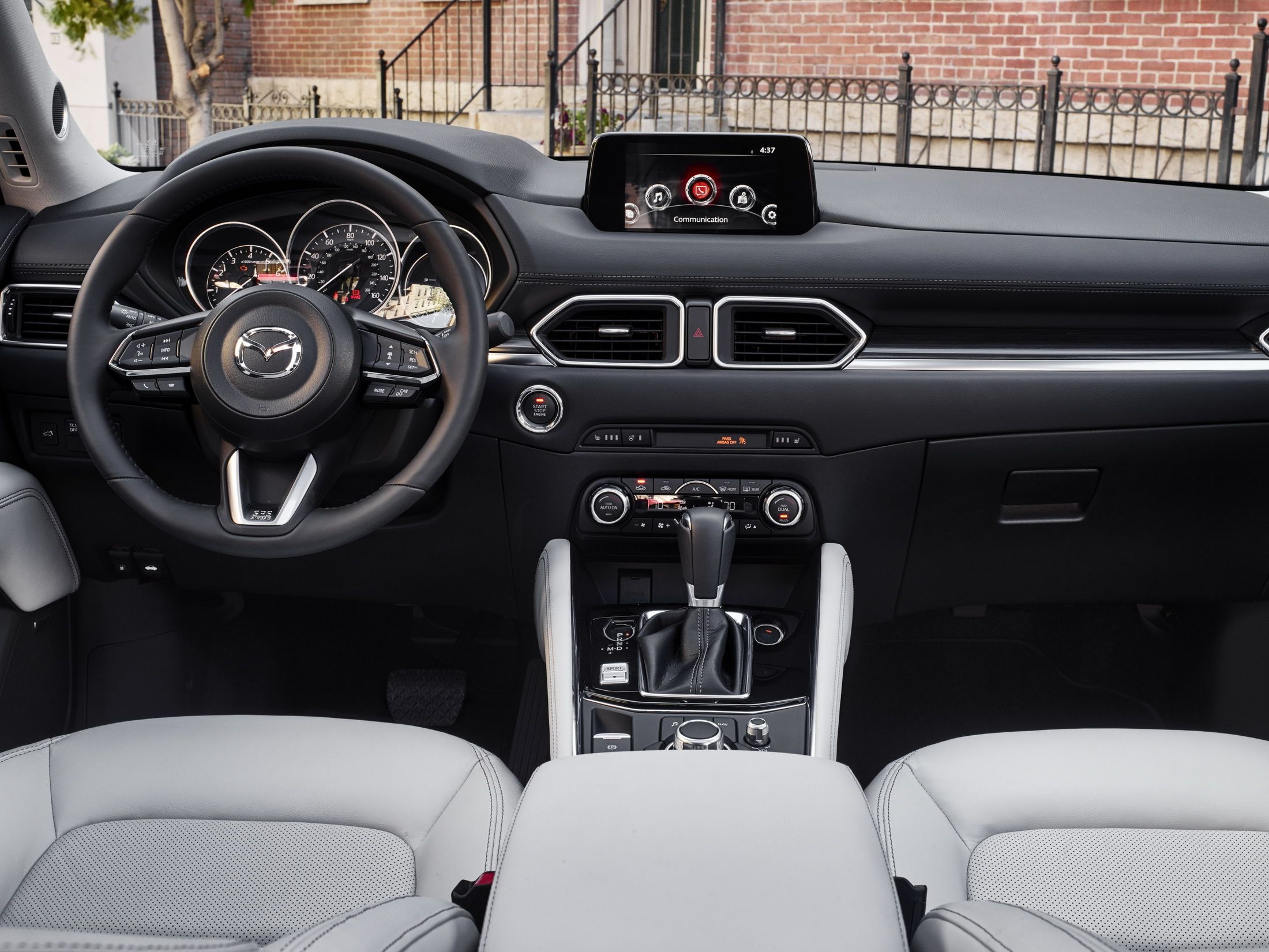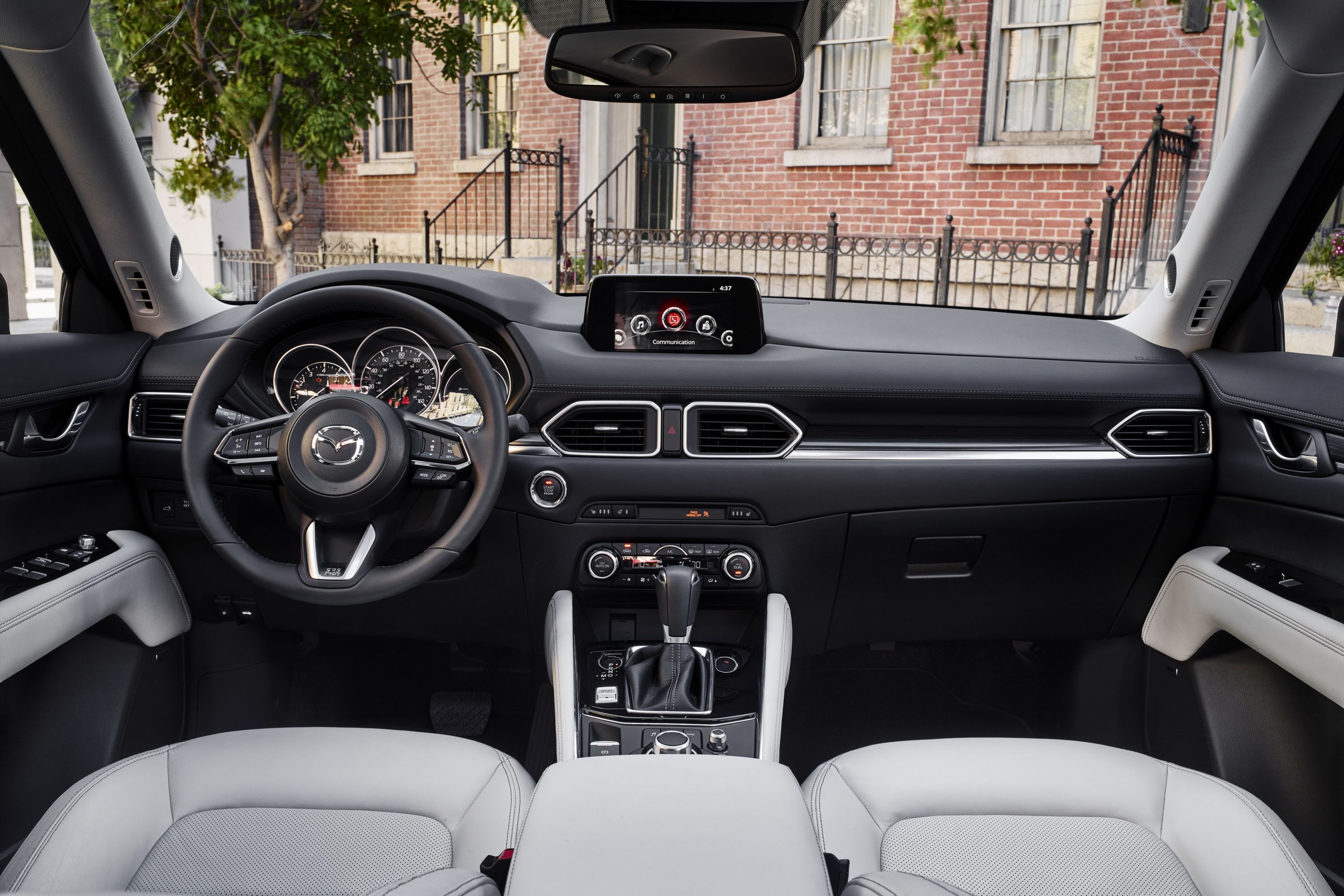When it was introduced for the 2013 model year, Mazda had high hopes for the CX-5. But, the model has been a major disappointment with sales in 2014 not even hitting the 100,000 mark while models from competitors, like the Honda CR-V, for example, saw much higher numbers to the tune of 350,000 examples sold. The CX-5 was facelifted in 2016, but it still failed to meet expectations, despite having a fair amount of muscle under the hood. Consider the CX-5 isn’t exactly a slouch, it must be the design that turns customers away, so Mazda got to work. It didn’t take long for Mazda to complete the second-gen model, and it made its debut at the 2016 Los Angeles Auto Show sporting an awesome new body color, G-Vectoring Control, a revamped body shell, slightly wider stance, and the addition of Mazda’s SKYACTIV, 2.2-liter diesel engine as an option for U.S. buyers.
The hardest thing Mazda really has to overcome is how overcrowded the compact SUV segment really is. Big names like CR-V, Escape, Equinox, and Rav 4 all resonate through the minds of those looking for the best ride in this segment, and that doesn’t help a newer model like the CX-5 – being around just a few years – establish a good hold in the market. But Mazda isn’t giving up yet, and the new design that makes front clip inherently longer than the outgoing model should help the CX-5 garner the attention of those really wanting a sporty compact SUV. On top of that, there’s lots of cool technology like Mazda’s G-Vectoring control, i-ACTIVESENSE safety features, and there’s even a two-step reclining mechanism built into the rear seats.
But, there’s a lot more to talk about when it comes to the 2018 Mazda CX-5, so let’s dive on in a take a good look at what it brings to the table and how it compares to the rather stiff competition in this segment.
2017 Mazda CX-5
- Make: Array
- Model: 2017 Mazda CX-5
- [do not use] Vehicle Model: Array
Exterior
The new CX-5 is actually a bit wider in the front and rear, but not by much, with just 0.39 inches added to the overall width. Notice how the roof is just a little more bubbly in the front? That’s because Mazda moved the A-pillars back by 1.38 inches, making the front clip look inherently longer. As you can see, the layout of the windows hasn’t changed at all, with the only notable difference being the chrome trim that gets much wider as it curves along the lower edge of the rear quarter window. As far as the rest of the side profile goes, it took a few changes as well. For instance, there’s a small concave area just behind the rear stationary glass. The body lines just below the waistline carry over, but the concave section on the lower portion of the doors has been leveled out and lowered. As such, the garnishing on the side skirts is now shorter.
Up front, the grille is now a little bit larger and now features a black mesh as opposed to the horizontal slats of the outgoing model. It also has a floating look thanks to the slight overhang above it and the chrome trim insert that encompasses the bottom and sides, effectively leading into the headlights. Those headlights, by the way, are now smaller and sleeker and feature an all-new lens layout. Down below, the air dam is about the same size but is accented by the body cladding that covers the bottom of the fascia. This cladding enhances the sporty appearance of the CX-5, giving it the appearance of having a front spoiler of sorts. And, rounding off the front, are the new thinner and wider fog lights that you quite simply can’t miss when comparing the new and outgoing model.
In the rear, you’ll notice that the new model has a much smaller overhang above the rear glass while the side flares at the top corners are now more extended than before. It should also be noted that the rear glass has been angled just slightly forward, giving the rear hatch an all new look. Down below, the taillights now have sharper corners and feature a new lens layout while the license plate recess is now wider and takes a different shape. Down at the bottom of the fascia, the body cladding has actually been sized down a little but looks more sculpted than before with a much larger reflector in each corner. A chrome exhaust tip rounds off the exterior in the rear.
The Competition
When it comes to comparing the new CX-5 to the competition, there are a few things to take into consideration. Two of the CX-5’s competitors, the Honda CR-V and the Ford Escape, both went through a generational shift for the 2017 model year. But, the evolution of every model isn’t equal. The fifth-gen CR-V brings a very sporty presence to go with aggressive styling. It also has more rearward-sitting A-Pillars, a feature that helps make I stand out just like the CX-5. If you’re looking for something sporty and aggressive, you’re going to have a hard time choosing between the CR-V and the CX-5, as they both bring a lot to the table in that regard. The CR-V even has pretty muscular rear haunches, which is a bit of an oddity in this segment.
But, if you like to take a minimalist standpoint on your mobile affairs, you may appreciate the simplistic nature of the new Ford Escape’s body. Sporting a much shorter front clip, a rather uneventful front grille, bulky fog lights, and a side profile that emphasizes the lack of width above the waist line, the Escape is certainly aimed at those wanting something more utilitarian and nature. To put it simply, it’s something you’re more likely to find in your grandparent’s garage. The kind of look you’re going for is up to you, but before you set yourself on one of these models, there’s a whole lot more to talk about.
|
Ford Escape |
Honda CR-V |
Chevvrolet Equinox |
Kia Sportage |
Toyota Rav 4 |
Mazda CX-5 |
|
|
Wheelbase (inches) |
105.9 |
103.1 |
112.5 |
105.1 |
104.7 |
106.3 (est.) |
|
Length (inches) |
178.1 |
179.4 |
187.8 |
176.4 |
183.5 |
178.7 (est.) |
|
Height (inches) |
66.3 |
64.7 |
66.3 |
64.4 |
67.1 |
67.3 (est.) |
|
Width (inches) |
81.8 |
71.6 |
72.5 |
73.0 |
72.6 |
72.49 (est.) |
Interior
Looking at the interior of the new CX-5 is actually a little refreshing. Mazda finally got the hint that its dash design was dated and ugly, and did something about it. The dash is much flatter than before and features redesigned HVAC vents, revised HVAC controls, and that ugly little infotainment display is gone. The infotainment display has been replaced by a new, seven-inch unit that now sits atop the dash instead of being recessed into the dash like an old, miniature, tube TV. The spokes on the steering wheel now have a new look while the instrument cluster ahead hasn’t changed much. There is a new 4.6-linch LCD display that acts as a driver information center. There’s also something Mazda calls “Active Driving Display” which is basically a HUD that displays navigation information
As you can see from the images above, the new CX-5 (left) has seen some extensive modification from the waist down. The arm rests on the door trim now sit flat and angle downward in the front as opposed to upward. As such, the window and mirror controls have been moved back a little and also sit flat. The old model features chrome trim that was surrounding the window and mirror controls, but for the new model, Mazda decided to go with giving the armrests a contrasting color, in this case white. The center console has also changed a little bit. The base of the console now sits a little higher, which means the sides up front are much shorter. The console is also a little bit wider, allowing the buttons and control knob to be spaced farther apart.
The seat design has also changed, but still offers a contrast to most of the interior as they are done up in white as well. The seats now feature slightly larger bolsters including a little bit of bolstering up front. There is a large storage compartment between the front seats that is also wrapped in white leather. The seatbacks of the front seats are black, helping to offset the dark/white ambiance of the interior. In the rear, the seats take styling with less bolstering, but it should be noted that Mazda took the time to throw in a headrest for the center seat – something you don’t always see in SUV’s, let alone in the compact SUV segment. The seatbelts are also black, which really stands out against the white seats.
As far as other technology goes, the CX-5 gets Mazda Connect, an advanced connectivity system that allows a stable connection between smartphones and other mobile devices. This connection allows control of some auto functions, hands-free phone operation, and navigation. It should be noted that this system is called MZD Connect in markets outside of North America and Japan. On the audio front, the CX-5 comes with a 10-speaker Bose audio system that includes a tweeter in each A-pillar that helps to emphasize the sound quality provided by Bose’s AudioPilot 2 noise compensation and Centerpoint2 surround sound.
The Competition
When Honda ushered in the fifth-gen CR-V, it did so with a sexy cabin that featured a flatter dashboard that is wrapped in soft leather to go with a revised infotainment display that appears to hover within the center stack. The biggest different between the CR-v is the organization of the center console, which features an elevated plateau in the front that houses the shifter mechanism. The rest of the console sits much lower. The CR-V’s interior is quite sporty and competes well with the CX-5, so if it comes between the two, focus on overall seat comfort and whether or not you want to have an elevated and forward-sitting gear shifter. If you want the latter, the CR-V is for you.
The dullness of the Escape’s exterior may have misled you to believe the interior would be dull as well. Well, if you look at the images above (the Escape is positioned top left,) you’ll see that the Escape has quite a bit going on for it inside. It’s a huge difference compared to the exterior, but sometimes that’s exactly what we’re looking for – something that blends in on the outside, but feels very upscale and modern on the inside. The Escape does this well. The instrument cluster is sleek and sexy with a dark blue backlighting that is somewhat relaxing, to say the least. The door trim panels remind me of something you would find in a sports car, with lots of dramatic styling, recessed areas, and a little bit of contrasting color. You’ll find that the seating of the Escape is just as comfortable as the competition, but if you’re not a fan of Ford’s Sync system, you’ll probably look elsewhere, as this model has Sync 3. While that system has been revised to be smooth, it’s bulky and looks rather ugly with the surrounding trim in the escape. One could even argue that it sits a little too high in the center stack than it should. As they say, you can’t have your cake and eat it too, right?
|
Ford Escape |
Chevvrolet Equinox |
Honda CR-V |
Kia Sportage |
Toyota Rav 4 |
Mazda CX-5 |
|
|
Head Room - Front |
39.9 |
40.9 |
39.9 |
39.3 |
39.8 |
40.1 |
|
Head Room - Rear |
39 |
39.2 |
38.6 |
39.1 |
38.9 |
39.0 |
|
Leg Room - Front |
43.1 |
41.2 |
41.3 |
41.5 |
42.6 |
41.0 |
|
Leg Room - Rear |
37.3 |
39.9 |
38.3 |
38.2 |
37.2 |
39.3 |
|
Shoulder Room - Front |
55.9 |
55.8 |
58.6 |
57.1 |
57.3 |
57.5 |
|
Shoulder Room - Rear |
55.2 |
55.3 |
56.4 |
55.1 |
55.4 |
55.5 |
Note: For Mazda CX-5 all figures are est.
Drivetrain
Mazda has made very little progress in the way of developing or bettering its current engine lineup. Even models like the 2017 Mazda 6 have carried on with that 2.5-liter SkyActiv engine. With that said, we were all hoping that Mazda would come up with something new, but sadly, the new CX-5 comes with the same 2.0-liter and 2.5-liter Skyactiv engines found in the outgoing model. Mazda has said nothing about power output, so chances are they carry over unchanged. That means you get 155 horsepower and 150 pound-feet of torque from the 2.0-liter or 184 horsepower and 185 pound-feet with the 2.5-liter. Mazda has, however, announced a 2.2-liter “clean” diesel for the U.S. market. No power or torque figures are available, but a fair estimate would be somewhere around 170 horsepower and maybe 290 pound-feet of torque. Remember, that’s just an estimate, so we’ll be updating that figure when Mazda finally spills the beans.
On a side note, I highly doubt that the two gasoline engines are maxed out as far as output performance goes, so – with any luck – Mazda has massaged them to deliver a little something extra for this generation and has yet to reveal they juicy details quite yet. Then again, Mazda has been known to slack on things here and there (take the use of an unmodified SR turbo engine in the new Sentra Nismo, for example) plus the engines do provide fair power for this segment any. So, don’t hold your breath too much for any real change in output. Shifting duties of all engines can be handed by Mazda’s Skyactiv-Drive, six-speed automatic or the six-speed manual (at least you can opt to row your own if you want, right?)
Note: Outgoing CX-5 drivetrain shown here.
As expected, the new CX-5 gets Mazda’s G-Vectoring Control that debuted for the first time in the Mazda 6. It is able to adjust torque based on steering wheel action and is said to “deliver unified control of lateral and longitudinal acceleration forces” In other words, it helps control G-force during extreme maneuvers. Being put to use on an SUV is actually a pretty big deal since they are generally top heavy and tend to lean during more spirited driving. On the suspension and chassis front, you’ll find MacPherson struts up front and a multi-link system in the rear. The shocks in the front and rear are no larger in size and feature liquid-filled bushings up front. The front brake rotors are ventilated while the rears are solid, but both feature Mazda’s new Auto-hold function that keeps the vehicle sitting in position even after your foot is removed from the brake – a feature that could be helpful in those dreaded traffic jams.
Performance figures for the CX-5 have never been released, but the current model achieves 26 mpg in the city, 35 mph on the highway, and 29 mpg combined with the 2.0-liter, while those figures change to 26, 33, and 29, respectively with the FWD 2.5-liter. Going with all-wheel drive will drop fuel economy to 25 mpg in the city, 30 mpg on the highway, and 26 mpg combined. There’s no word as to what the new diesel will produce, so stay tuned for updates on that front as we move closer to the CX-5’s official launch for 2018.
The Competition
Considering the CR-V comes standard across all ranges with 185 ponies and 181 pound-feet, it’s pretty easy to see why customers would consider the Honda over the Mazda. Furthermore, the Honda also gets similar fuel economy, matching the CX-5 at 27 mpg in the city and 29 mpg combined, but gets an extra mpg for highway driving, garnering 35 mpg to the CX-5’s 34. The 2.5-liter CX-5 gets the same ratings in the city and on the highway in FWD form but only gets 33 mpg on the highway while the AWD variant suffers by two mpg in the city, five mpg on the highway, and three mpg combined.
When it comes to the Ford Escape, customers are able to choose between a 1.6-liter, 2.0-liter, and 2.5-liter. Output for the 1.6 comes it at 178 horsepower and 184 pound-feet while the 2.5 offers 168 ponies and 170 pound-feet of twist. The 2.0-liter comes with an awesome 240 horsepower and 270 pound-feet blowing the Honda and the Mazda out of the water on the power front. Fuel economy of the Ford isn’t the greatest with an average of 22-to-23 mpg in the city and 28-to-32 mpg on the highway depending on how it is equipped.
|
Ford Escape 2.5 |
Ford Escape 1.5 |
Ford Escape 2.0 |
Honda CR-V |
Chevvrolet Equinox 2.4 |
Chevvrolet Equinox 3.6 |
Kia Sportage 2.4 |
Toyota Rav 4 |
Mazda CX-5 |
Mazda CX-5 diesel |
|
|
Engine |
2.5L iVCT |
1.5L EcoBoost® with Auto Start-Stop |
2.0L Twin-Scroll EcoBoost® with Auto Start-Stop |
2.4L In-Line 4-Cylinder |
2.4L DOHC 4-cylinder SIDI |
3.6L V6 SIDI |
2.4L I4 |
2.5-Liter 4-Cylinder DOHC 16-Valve with Dual VVT-i |
SKYACTIV®24-G 2.0L DOHC 16-valve 4-cylinder with VVT |
2.2-liter diesel engine |
|
Horsepower |
168 HP @ 6,000 RPM |
179 HP @ 6,000 RPM |
245 HP @ 5,500 RPM |
185 HP @ 6,400 RPM |
182 HP @ 6,700 RPM |
301 HP @ 6,500 RPM |
181 HP @ 6,000 RPM |
176 HP @ 6000 RPM |
155 Hp @ 6,000 RPM |
TBA |
|
Torque |
170 LB-FT @ 4,500 RPM |
177 LB-FT @ 2,500 RPM |
275 LB-FT @ 3,000 RPM |
181 LB-FT @ 3,900 RPM |
172 LB-FT @ 4,900 RPM |
272 LB-FT @ 4,800 RPM |
175 LB-FT @ 4,000 RPM |
172 LB-FT @ 4,100 RPM |
150 Lb-FT @ 4,000 RPM |
TBA |
|
EPA city/hwy/combined |
21/29/24 |
23/30/26 |
22/29/25 |
26/22/29 |
21/31 |
21/31 |
23/30/26 |
23/30/26 |
26/35/29 |
TBA |
|
Towing |
1,500 Lbs |
2,000 Lbs |
3,500 Lbs |
1,500 Lbs |
1,500 Lbs |
1,500 Lbs |
2,000 Lbs |
1,500 Lbs |
2,000 Lbs |
TBA |
|
Weight |
3,552 Lbs |
3,526 Lbs |
3,613 Lbs |
3,358 Lbs |
3,926 Lbs |
3,926 Lbs |
3,305 Lbs |
4,525 Lbs |
3,212 Lbs |
TBA |
Pricing
Pricing is a complete mystery right now, but knowing Mazda, it will want to be compensated for the work it put into the CX-5. The current model, which Mazda is marketing as a “2016.5” model, starts out at $21,795 for the entry-level model. The mid-range, Touring trim comes in at $25,215, while the Grand Touring model starts out at $28,570. Pricing will likely increase to $22,500, $26,000, and $29,300, respectively.
Competitive Pricing
Mazda actually has a little bit of an advantage on the pricing front depending on where you look. But that could all change if pricing increases with the next-gen model. Right now, the CX-5 is $200 cheaper than the Ford Escape in entry-level form, but significantly more expensing in mid- and range-topping forms. The CR-V is priced a little more across the board, but with five different trim levels, you can step up a level and pay less than going with the mid-range CX-5. Same thing for the near-range topping CR-V EX-L for a few hundred less with similar equipment to the range-topping CX-5.
|
Entry-level |
Mid-range |
Range-topper |
|||
|
2016 Mazda CX-5 |
$22,500 |
$26,000 |
$29,300 |
||
|
2017 Ford Escape |
$21,995 |
$23,495 |
$27,495 |
||
|
2016 Honda CR-V |
$23,845 |
$24,645 |
$26,095 |
$28,545 |
$32,195 |
|
Chevrolet Equinox |
$23,100 |
$25,510 |
$26,750 |
$30,040 |
$31,790 |
|
Kia Sportage |
$22,990 |
$25,500 |
$24,490 |
$27,000 |
$34,000 |
|
Toyota Rav4 |
$24,910 |
$26,830 |
$29,985 |
$29,985 |
$34,750 |
Note: Prices for the Mazda CX-5 are est.
Competition
Ford Escape
The Ford Escape has some experience under its belt. It’s been around since about mid-2000 when it was introduced as a 2001 model. It has since evolved twice, with the most current generation coming into play for the 2014 model year. With that said, we’re expecting the Escape to get a facelift sometime in 2017 for the 2018 model year, but with this kind of time frame, we won’t see a fourth-gen model until 2020 or later. Offered in three trim levels, the Escape is just a touch more expensive than the CX-5 in entry-level form, while the mid- and range-topping models are cheaper.
Read more about the Ford Escape here.
Honda CR-V
The CR-V might be a little more expensive compared to the CX-5 and Ford Escape, but it has the advantage because there are five trim levels to choose from. This means that there’s literally a flavor for just about anyone. With Pricing ranges from $23,845 up to $32,195, which could be considered a bit much for a compact SUV. On the positive side, however, that Touring is equipped from the factory with just about anything you could want in a modern SUV or Crossover.
Find out more about the Honda CR-V here.
Conclusion
Mazda’s initial problem with slow sales of the CX-5 can undoubtedly be attributed, at least in part, to the overcrowding for the compact SUV segment. In all honesty, the CX-5 never really looked bad, but when you have such a large number of competitors out there, it’s really hard to stand out and garner a big chunk of the pie. Now that we’ve seen the next-gen model in the metal, we can comfortably say that Mazda is working hard to make the CX-5 stand out, and this new design helps it to do just that. The CX-5 is sexy, the cabin is fresh, and there’s a new diesel for those of you who like oil burners. But, with so many different models to choose from in this segment, making a final choice between them will be difficult. The CX-5 certainly won’t disappoint if you’re looking for aggressive and sporty styling inside and out with superb comfort and great technology.


